Rocky Mountain Association of Geologists
PRESENTS


Rocky Mountain Association of Geologists

o n f e r e n c e
Geoscience ~ Exploration ~ Commercialization
April 8-10, 2025
The Hyatt Regency Aurora-Denver Conference Center
1300 East 14th Place
Aurora, CO 80011
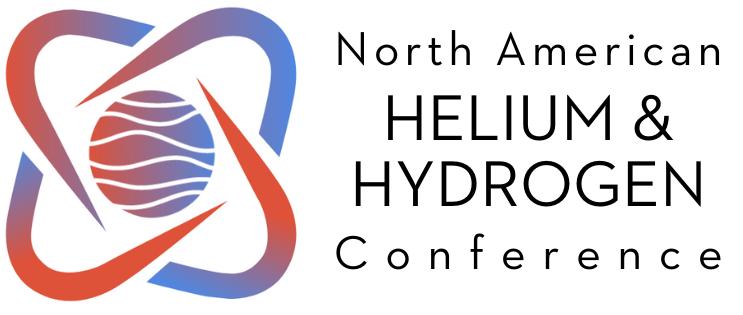
Overview of Global Helium Market and Outlook for Helium Supply and Demand
Potential Synergies in Exploration for Natural Hydrogen and Helium
What Makes a Successful Helium/Hydrogen Prospect, Two Years Later
Project Development Hurdles: Midstream & Markets
Geologic and strategic insights reveal the state of play in the natural hydrogen industry
H elium Exploration on the Sierra Grande Uplift - Merging Old Methods with Modern Science Mathew Goolsby, Vecta Oil & Gas, Ltd.
The Paradox Basin Akah Formation: Implications for Solving North America’s Rapidly Depleting Helium Resource
He: N2 Ratios of Gases and What They Can Tell Us About Basement Generating Capacity of Helium
Reevaluation of the Lyons Sandstone Formation of Southern Colorado as a Helium Reservoir based on the latest drilling by Blue Star Helium
Rynott, Four Corner s Helium, LLC
Ron Broadhead, New Mexico Bureau of Geology and Mineral Resources
Sproule
Helium in the Las Animas Arch Area of Colorado and Kansas: Production and Potential Mike Poirer, Apogee Exploration
Petrophysical Model development and testing of the Permian Chase Group, Hougoton Field, Kansas Christopher Mullen, Bandit Exploration

Expanding the Giant Part 2: The Salt Compartmentalization and Gas Migration
Fox, Fox Bros Energy
Hydrogen and Helium Potential, Holbrook Basin, Arizona USA Robert Sterling, Confluence Resources
Geochemistry of Well Gases From the Holbrook Basin, Arizona Andrew Turner, U.S. Geological Survey
Evaluating Hydrogen generation at the Atlantis Massif
Magnetic and gravity data applications for exploring shallow basement resources, including elemental gases such as hydrogen and helium
Ryan Herz - Thyshsen, HT Geoscience Consulting
E. Bird, Bird Geophysical
'Hydrogen transport across sedimentary systems: migration dynamics and seal integrity Rūta Karolytė, Snowfox Discovery
Regional Groundwater Excess Helium Isotopic Compositions as a Tool for Hydrogen and Helium Prospecting
Mapping Geologic Hydrogen Prospectivity in the Conterminous United States Part I: Geologic Inputs , Part II: Mapping Methodology
Geochemical Characterization of the GeologicalHydrogen Potential of Northeastern Minnesota
Exploring the potential of Banded Iron Formations for geologic H2 generation
University of Colorado
Building a Regulatory Framework for Helium and Hydrogen Production from the Ground Up in Minnesota Gwen Brodsky, Aota Technical, LLC & Don Elsenheimer, Minnesota Department of Natural Resources
Helium East of the Mississippi River in North America Steven Tedesco, Running Foxes Energy Inc.
The Geology of the Topaz Helium Project, Duluth Complex, Minnesota
On the Estimation of Geologic Hydrogen and Helium Resources in Texas
Pulsar
Saad Saleh, Bureau of Economic Geology, The University of Texas at Austin
Exploring Natural Hydrogen in the South West of France Beno î t Hauville, 45 - 8 ENERGY
Code Comparison Study for Modeling Geologic Hydrogen

Combining Old and New – Unlocking the fractured Witwatersrand Formation Reservoir of the Helium and Methane play of South Africa
The Virginia Witwatersrand - type Helium Deposit, South Africa: New Constraints on the Origin and Evolution from Gas Geochemistry
Developing a Tool for Helium Prospecting Using Legacy Rock Samples – Relating Residual Helium and Other Volatiles in 10 Legacy Cores to Helium Tests Using Rock Volatiles Stratigraphy
Ryan, D3 Energy
Application of Wellsite Mass Spectrometry for Helium Resource Development Scott Field, Field Geo Services, Inc.
Soil Gas in Modern Resource Exploration Gary Rice, GeoFrontiers Corporation
Potential for Hydrogen & Helium Storage in Salt Caverns in North America Matthew Bauer, Agapito Associates, Inc.
Working Gas Cycling and Produced Water Impacts
Hydrogen Reservoir Performance in Temporary Geologic Storage Donna Willette, Illinois State Geological Survey
Evaluation of Potential Geochemical and Microbial Challenges Associated with Hydrogen Storage in Porous Media
Benefits of Pressure Swing Adsorption for Helium Separation
Modular Hydrogen Purifiers
Understanding the Subsurface Helium System in Manitoba and Evaluating the Potential for Economic Concentrations by Analyzing Entrained Volatiles in Legacy Cuttings
Report 120: the Alberta Energy Regulator & Alberta Geologic Survey 2021 - 2023 Aeromag Data Acquisition: Implications for Helium Exploration
Exploring for Helium + Hydrocarbons in Western Albertathe HeHC Strategy
Helium Production from Devonian Beaverhill Lake at the Knappen Field, SE Alberta
Joao Gallotti, U.S. Geological Survey
Alex Judge, IACX
Kirsten O'Sullivan, Air Liquide, & Paul Terrien Air Liquide
Christopher Smith, Advanced Hydrocarbon Stratigraphy (AHS)
Duncan MacKenzie, Global Helium Corp.
Brad Hayes, Petrel Robertson Consulting Ltd.
Henry Williams, Thor Resources Inc.
Helium Recovery from U.S. Shale Gas: New Opportunities for the LNG Sector
Tongwei Zhang, Bureau of Economic Geology, The University of Texas at Austin

Market Valuations of Helium and Hydrogen Exploration & Production Companies
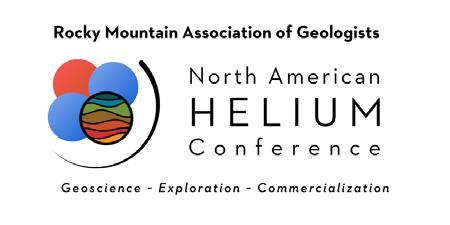

March 25, 2025
Conference Attendees:
It is with great pleasure that we welcome you to the Rocky Mountain Association of Geologists 2025 North American Helium & Hydrogen Conference. We are honored to host this event and are thrilled by the overwhelming response we have received. We extend our sincerest gratitude to everyone who has joined us this week.
As we gather to discuss the latest developments in helium and hydrogen exploration and commercialization, we recognize that this would not have been possible without the generous support of our sponsors and exhibitors. Their contributions both helped make this event a reality and importantly assisted in making this an affordable event. As such, we are grateful for their continued support.
We also want to express our appreciation to all the speakers who without their contributions this conference would not have happened. Your participation and engagement have made this event a great success for all the attendees who have taken the time to join us for this conference. A special thank you is given to all the companies that have allowed permission for the material to be presented over the course of these two days.
We are confident that this conference will be an informative and engaging experience for all of us. We hope that you will take advantage of the opportunity to connect with industry leaders, share your expertise, and gain new insights into the latest developments in the helium and hydrogen industry. It is both our hope, and RMAG’s, that the connections and new insights will help your helium exploration efforts.
Once again, on behalf of the entire planning committee, we extend our sincere thanks to all our sponsors, exhibitors, speakers, and attendees for their support and participation in this conference. We wish you a productive and enjoyable event.
Sincerely,
Jeff Aldrich & Mark Germinario Helium & Hydrogen Conference Planning Committee Co-Chairs

Pre-Conference – April 8, 2025
11:00 am Exhibitor Registration and Set Up
2:00 pm General Registration Open
6:00 pm Registration Closes

6:30 am Doors Open – Registration and Breakfast
7:30 am Opening Remarks – Matthew Bauer, 2025 RMAG President
7:45 am
8:30 am
8:30 am
KEYNOTE: Overview of Global Helium Market and Outlook for Helium Supply and Demand, Phil Kornbluth Kornbluth Helium Consulting LLC
HELIUM EXPLORATION: ROCKIES
Session Chair: Jeff Aldrich
Helium Exploration on the Sierra Grande Uplift-Merging Old Methods with Modern Science, Mathew Goolsby, Vecta Oil & Gas, Ltd.
9:00 am
9:30 am
The Paradox Basin Akah Formation: Implications for Solving North America’s Rapidly Depleting Helium Resource, Tim Rynott, Four Corners Helium, LLC
He: N2 Ratios of Gases and What They Can Tell Us About Basement Generating Capacity of Helium, Ron Broadhead, New Mexico Bureau of Geology and Mineral Resources
10:00 am Break
HELIUM EXPLORATION: ROCKIES
10:30 am
10:30 am
11:00 am
11:30 am
Session Chair: Jeff Aldrich
Reevaluation of the Lyons Sandstone Formation of Southern Colorado as a Helium Reservoir based on the latest drilling by Blue Star Helium, Jeff Aldrich, Sproule
Helium in the Las Animas Arch Area of Colorado and Kansas: Production and Potential, Mike Poirer, Apogee Exploration
Petrophysical Model development and testing of the Permian Chase Group, Hougoton Field, Kansas, Christopher Mullen, Bandit Exploration, LLC
12:00 pm Lunch
HYDROGEN EXPLORATION
Session Chair: Sean Brennan
Evaluating Hydrogen Generation at the Atlantis Massif, Ryan Herz-T hyhsen, HT Geoscience Consulting
Magnetic and gravity data applications for exploring shallow basement resources, including elemental gases such as hydrogen and helium, Dale E. Bird, Bird Geophysical
Hydrogen transport across sedimentary systems: migration dynamics and seal integrity, Rūta Karolytė, Snowfox Discovery
HYDROGEN EXPLORATION: US
Session Chair: Geoff Ellis
Regional Groundwater Excess Helium
Isotopic Compositions as a Tool for Hydrogen and Helium Prospecting, Andrew Hunt, U.S. Geological Survey
Mapping Geologic Hydrogen Prospectivity in the Conterminous United States
Part I: Geologic Inputs
Part II: Mapping Methodology
Jane Hearon, U.S. Geological Survey

12:30 pm
1:30 pm
1:30 pm
KEYNOTE: Potential Synergies in Exploration for Natural Hydrogen and Helium, Geoffrey Ellis, U.S. Geological Survey
HELIUM EXPLORATION: ROCKIES
Session Chair: Mark Germinario
Expanding the Giant Part 2: The Salt Compartmentalization and Gas Migration, Matthew Fox
2:00 pm
2:30 pm
Hydrogen and Helium Potential, Holbrook Basin, Arizona USA, Robert Sterling, Confluence Resources
Geochemistry of Well Gases from the Holbrook Basin, Arizona, Andrew Turner, U.S. Geological Survey
3:00 pm Break
HELIUM EXPLORATION: MID CONTINENT
HYDROGEN EXPLORATION: MID CONTINENT
Session Chair: Geoff Ellis
Geochemical Characterization of the Geological-Hydrogen Potential of Northeastern Minnesota, Valentine Combaudon, University of Colorado, Boulder
Exploring the potential of Banded Iron Formations for geologic H2 generation, Olivier Sissman, IFP Energies Nouvelles
Building a Regulatory Framework for Helium and Hydrogen Production from the Ground Up in Minnesota, Gwen Brodsky, Aota Technical, LLC & Don Elsenheimer, Minnesota Department of Natural Resources
3:30 pm
3:30 pm
4:00 pm
4:30 pm
Session Chair: Mark Germinario
Helium East of the Mississippi River in North America, Steven Tedesco, Running Foxes Energy Inc.
The Geology of the Topaz Helium Project, Duluth Complex, Minnesota, Nick Schfield, Pulsar Helium Inc.
On the Estimation of Geologic Hydrogen and Helium Resources in Texas, Saad Saled, Bureau of Economic Geology, The University of Texas at Austin
5:00 pm Networking Happy Hour
HYDROGEN EXPLORATION: WORLD EXPLORATION
Session Chair: Ron Broadhead
Exploring Natural Hydrogen in SW of France, Benoît Hauville, 45-8 Energy
Code Comparison Study for Modeling Geologic Hydrogen, Mark White, Kansas Geological Survey

7:00 am Doors Open – Registration and Breakfast
7:45 am
8:30 am
8:30 am
KEYNOTE: What Makes a Successful Helium/Hydrogen Prospect, Two Years Later, Steven Tedesco, Running Foxes Energy Inc.
HELIUM: INTERNATIONAL
Session Chair: Sean Brennan
Combining Old and New – Unlocking the fractured Witswatersrand Formation Reservoir of the Helium and Methane play of South Africa, Gerad Ryan, D3 Energy
9:00 am
9:30 am
The Virginia Witwatersrand-type Helium Deposit, South Africa: New Constraints on the Origin and Evolution from Gas Geochemistry, Fin Stuart, SUERC
Developing a Tool for Helium Prospecting Using Legacy Rock Samples – Relating Residual Helium and Other Volatiles in 10 Legacy Cores to Helium Tests Using Rock Volatiles Stratigraphy, Christopher Smith, Advanced Hydrocarbon Stratigraphy (AHS)
10:00 am Break
HELIUM: CANADA
10:30 am
10:30 am
11:00 am
Session Chair: Michele Bishop
Understanding the Subsurface Helium System in Manitoba and Evaluating the Potential for Economic Concentrations by Analyzing Entrained Volatiles in Legacy Cuttings, Christopher Smith, Advanced Hydrocarbon Stratigraphy (AHS)
Report 120 - the Alberta Energy Regulator & Alberta Geologic Survey 2021-2023 Aeromag Data Acquisition: Implications for Helium Exploration, Duncan MacKenzie, Global Helium Corp.
TECHNOLOGY
Session Chair: Steven Tedesco
Application of Wellsite Mass Spectrometry for Helium Resource Development, Scott Field, Field Geo Services, Inc.
Soil Gas in Modern Resource Exploration, Gary Rice, GeoFrontiers Corporation
11:30 am
Exploring for Helium + Hydrocarbons in Western Alberta - the HeHC Strategy, Brad Hayes, Petrel Robertson Consulting Ltd.
TECHNOLOGY
Session Chair: Steven Tedesco
Potential for Hydrogen & Helium Storage in Salt Caverns in North America, Matthew Bauer, Agapito Associates, Inc.
Working Gas Cycling and Produced Water Impacts Hydrogen Reservoir Performance in Temporary Geologic Storage, Donna Willette, Illinois State Geological Survey
Evaluation of Potential Geochemical and Microbial Challenges Associated with Hydrogen Storage in Porous Media, Joao Gallotti, U.S. Geological Survey

12:00 pm Lunch
12:45 pm
1:30 pm
1:30 pm
KEYNOTE: Helium Project Development Hurdles: Midstream & Markets, Jeremy Jordan, Jordan Development
HELIUM: CANADA
Session Chair: Michele Bishop
Helium Production from Devonian Beaverhill Lake at the Knappen Field, SE Alberta, Henry Williams, Thor Resources Inc.
2:00 pm
2:30 pm MARKET
Session Chair: Mark Germinario
2:30 pm
3:00 pm
Helium Recovery from U.S. Shale Gas: New Opportunities for the LNG Sector, Tongwei Zhang, Bureau of Economic Geology, The University of Texas at Austin
CO2, What You Need to Know About this Molecule. Production, Distribution, Marketing and the Several Commercial Applications, Ric Wiesemann, CO2 Coalition
3:30 pm Break
4:00 pm
TECHNOLOGY
Session Chair: Sean Brennan
Benefits of Pressure Swing A bsorption for Helium Separation, Alex Judge
Modular Hydrogen Purifiers, Kirsten O'Sullivan, Air Liquide, Paul Terrien, Air Liquide
MARKET AND ECONOMICS
Session Chair: Steven Tedesco
Fair Market Valuations of Helium and Hydrogen Exploration & Production Companies, Jeff Aldrich, Sproule
Helium Markets and Trends, Robert Goodin, U.S. Geological Survey
CLOSING KEYNOTE: Geologic and Strategic Insights Reveal the State of Play in the Natural Hydrogen Industry, Allegra Hosford Scheirer, GeoModeling Solutions LLC
4:45 pm Wrap Up Panel
Building a Hydrogen Market, Brian Debruine, Colorado Hydrogen Network
Mobile Mass Spectrometer for Field Screening of Gas Samples, Andrew Hunt, U.S. Geological Survey
R&D effort of geologic hydrogen production at the National Renewable Energy Laboratory, Xiaofei Pu, National Renewable Energy Laboratory




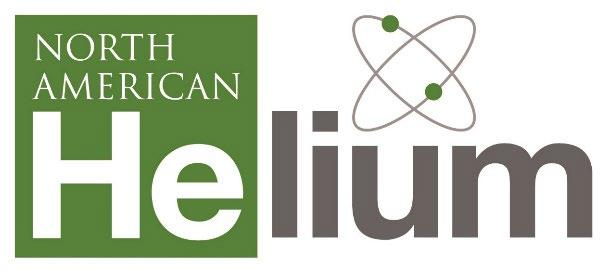


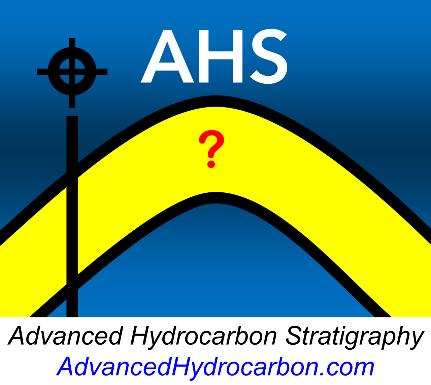





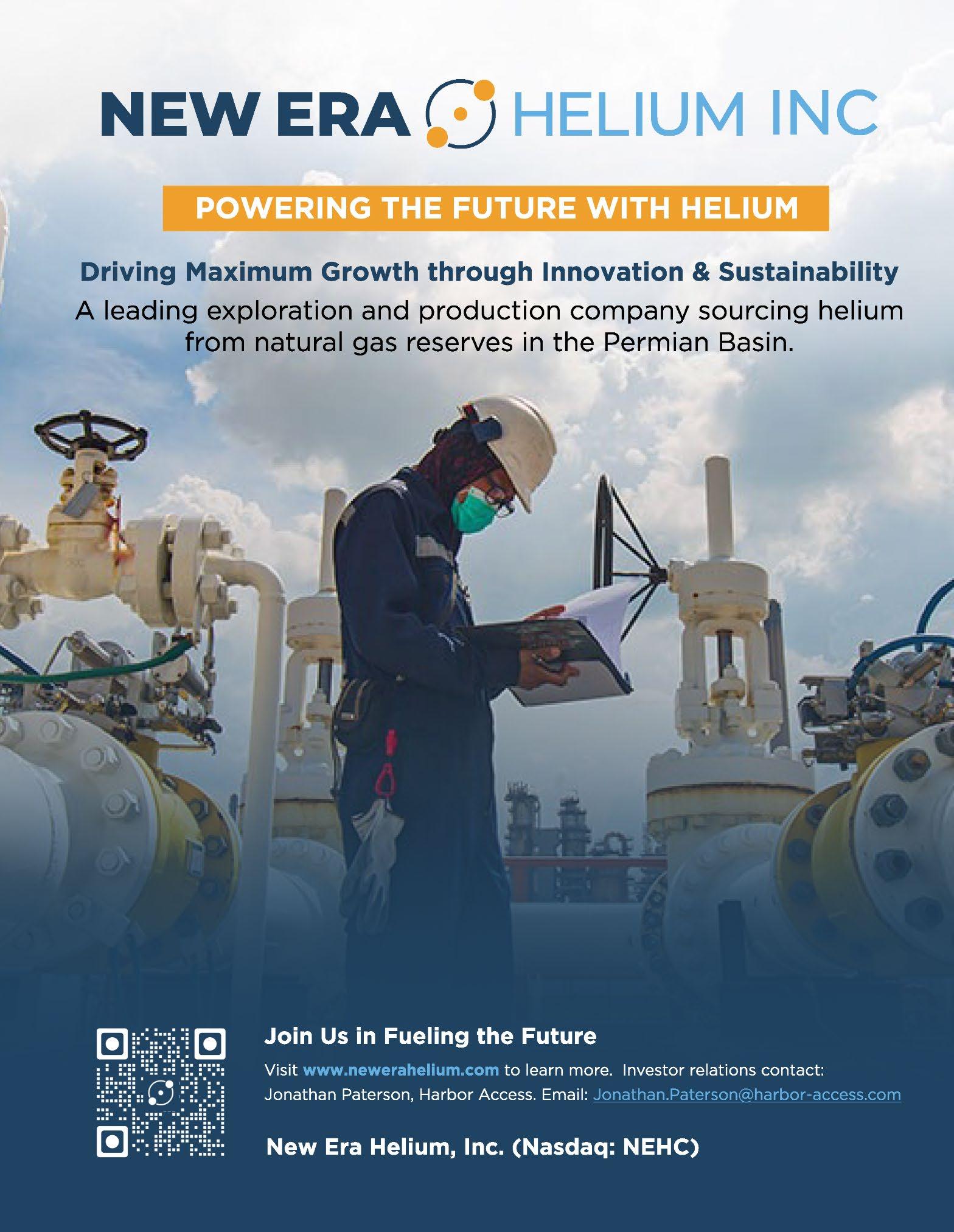



7:45 AM
Presenting
Wednesday, April 9, 2025
Overview of Global Helium Market and Outlook for Helium Supply and Demand Room A
Author Phil Kornbluth, Kornbluth Consulting
Abstract This presentation will provide an overview of the current market situation in the Global Helium Business as well as the near term and long term outlook for the balance between helium supply and demand, capacity utilization and pricing trends. The presentation will identify several of the larger helium projects that are expected to contribute new supply in the coming years. The presentation will also discuss the impact of sanctions on Russian helium and the impact of increased concern about geopolitical risk in the Helium Supply Chain. The presentation will also discuss the challenges that helium exploration companies are likely to face in what is expected to be a market where helium supply is plentiful.
Biography of Presenting
Author
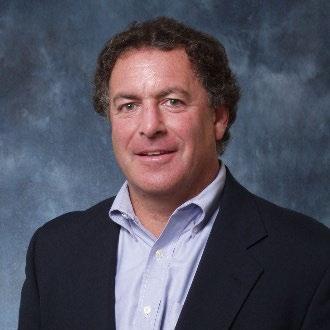
Phil Kornbluth is the founder and President of Kornbluth Helium Consulting, LLC, a helium - focused consultancy that advises clients on all commercial aspects of the Global Helium Business.
Phil is recognized as one of the gas industry’s leading independent commercial experts in the Global Helium Business. He has been employed by several leading industrial gas companies over the last 44 years, including The BOC Group, plc (BOC) and the Mathes on Gas subsidiary of Nippon Sanso Holdings (NSC) and has worked in various roles related to the Helium Business for the last 42 years. While at both BOC and NSC, Phil held executive positions that included general management and P&L responsibility for their global helium businesses. Phil has been a frequent speaker on helium - related topics at industry conferences, has contributed to and authored numerous helium - related articles and has made important contributions to U.S. helium legislation passed in 1996 and 2013. Phil has been consulting full - time for the last 10 years.
Kornbluth holds a BS degree in Economics from the University of Pennsylvania’s Wharton School of Business and received a Masters in Business Administration degree from Rider University.

Wednesday, April 9, 2025
8:30 AM
Presenting
Helium Exploration on the Sierra Grande Uplift - Merging Old Methods with Modern Science Room A
Author Mathew Goolsby , Vecta Oil & Gas, Ltd.
Co - Authors Steven M. Goolsby, William B. Untiedt, Vecta Oil & Gas, Ltd.
Abstract Helium was viewed in the past as a valuable byproduct when found associated with oil and gas. Over the last dozen years helium has been elevated to a much more valuable resource as emerging technologies and industries have increased the demand for this limited noble gas. Increasingly, helium is becoming a primary exploration target with any associated hydrocarbons considered secondary, or even undesirable. This evolving mindset is focusing new interest on areas outside of the conventional hydrocarbon - rich basins and provinces and into areas with less data and more geologic ambiguity.
In the early years of the oil and gas industry many areas were explored for hydrocarbons, found wanting in potential, and then left behind by the industry. Though the oil and gas industry abandoned these depositional basins the sparce data left in the indu stry’s wake occasionally bore intriguing evidence of helium occurrences. The Sierra Grande Uplift (SGU) of southern Colorado is one such example of an area with limited drilling and subsurface data where substantial discoveries and shows of helium have become part of the legacy.
Vecta Oil and Gas, Ltd. (VOG) has spent a decade developing an understanding of the helium occurrences and potential in the Sierra Grande Uplift and the greater Las Animas County region of southern Colorado. The tools that geoscientists use to explore for oil and gas also apply to helium exploration. The conditions to find commercial helium fields are the same as those required to find commercial hydrocarbon accumulations. The primary conditions necessary for both are:
1) Reservoir rock - Is there a formation with sufficient volume, porosity, permeability, and continuity to store sufficient volumes of helium?
2) Trap - Are the conditions present to seal and trap commercial accumulations of helium?
3) Charge - Have sufficient volumes of helium been introduced into the system to charge the traps with commercial quantities of gas?
4) Exploitation - Are there any barriers to drilling and delivering the helium to market?
VOG used archaic well data, published geology maps, unconventional data sources, and historical documents to confirm that these conditions are met on SGU. Since then, VOG has identified helium prospects in an area of over 4300 square miles covering the Greater Las Animas County area. There are a limited number of older drill holes over this area that penetrate the Lyons (Glorieta) Formation, which is the primary helium objective. This older well data was updated using modern methods in petrophysics, reserv oir modeling, and field

mapping to identify more than a dozen locations to test for helium with the drill bit.
Vecta’s work in the Sierra Grande Uplift area of southern Colorado can offer useful guidance for the explorationist prospecting for helium reserves in areas with older data resources and limited subsurface well control.
Biography of Presenting
Author
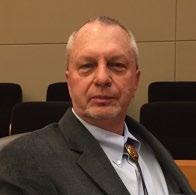
9:00 AM
Presenting
Mathew D. Goolsby earned a Bsc. in Geology from SFASU ('77) and spent the next 30 years consulting to the energy industry throughout the US and abroad. He formed Goolsby Brothers & Associates with his brother Steven Goolsby in 1980 as part of this endeavor. In 2009, Mathew joined Vecta Oil & Gas (VOG) to supervise operations in the Rocky Mou ntain state. Since 2015 he has spearheaded VOG's efforts in developing Helium prospects. Mathew Goolsby is a member of AAPG, RMAG, and SPE.
Wednesday, April 9, 2025
The Paradox Basin Akah Formation: Implications for Solving North America’s Rapidly Depleting Helium Resource Room A
Author Tim Rynott, Four Corners Helium, LLC
Abstract The middle - Pennsylvanian evaporitic Akah Formation plays a pivotal role for helium explorers in the in the Paradox Basin. Reaching thicknesses of greater than 6000’, this ~12,500 square mile NW/SE trending elliptical - shaped body has multiple operators (domestic and international) seeking to utilize the sealing capacity of the interbedded salts and anhydrites of the Akah, to test the dolomitized Mississippian Leadville Formation (equivalent to the Madison Fm at ExxonMobil’s LaBarge helium/CO2/methane field). Conventional traps develop in a multitude of structural styles and sizes under the Akah, while inheren t velocity issues and heterogenic priorities challenge explorationists. Proterozoic faulting that witnessed Laramide - influenced re - activation became significant conduits for both crustal and mantle derived helium, while high helium concentrations are also associated with the perimeters of the Paradox Basin sub - basins. Hot magnesium - rich brines traveling upwards through Proterozoic - aged faulting can create world class permeabilities and porosities, as witnessed in the northern San Juan Couty, Utah, Lisbon Fi eld (55 MMBO and 250 BCF @ ~1% helium). With flow rates of 4 - 8,000 MCFD, and helium percentages ranging from .75 to 1.4%, the economics are favorable for Akah subsalt payers, even if helium prices soften in the future. Considering the United States Federal Helium Reserve is ~90% depleted and has been sold to Germany based Messer LLC, it’s critical for the United States to locate a stable and plentiful source for helium, and not become dependent on helium from foreign sources. At current estimates, upwards t o 30 -

40 BCF of helium could be currently contained underneath the low permeability Akah Formation.
Biography of Presenting Author
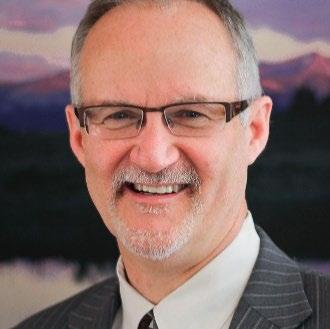
Mr. Rynott, founder of Four Corners Helium, LLC (FCH) and Ridge Resources, LLC has spent the majority of the past four decades successfully exploring for oil and gas in over twelve US Basins, including the Gulf of Mexico Deep Water.
The most recent five years has been an immersion in applying natural gas exploration techniques into successful helium endeavors. The Four Corners Helium technical team has mapped almost ten million acres of the helium charged Colorado Plateau and has active helium projects on Utah private fee and SITLA, plus Greenfield exploration on Ute Mountain Ute and Jicarilla Apache lands, which represent almost 700K prospective acres in the heart of the prolific 4Corners helium fairway.
Mr. Rynott has served on multiple leadership positions with the American Association of Petroleum Geologists (Including the Advisory Council and House of Delegates). He has provided domestic and International technical presentations to the AAPG, RMS, SEG, GCAGS, SIPES, Four Corners Oil & Gas Conference, HGS, LGS, and FCGS. He is a member of good standing with the AAPG, DPA (Cert #5803), LOGA, HGS, LGS (Honorary Member), FCGS, and SGE.


Wednesday, April 9, 2025
9:30 AM
Presenting
He: N2 Ratios of Gases and What They Can Tell Us About Basement Generating Capacity of Helium Room A
Author Ron Broadhead, New Mexico Bureau of Geology and Mineral Resources
Abstract Helium (He) and Nitrogen (N2) gases occur together in reservoirs but have different sources. He occurs as two isotopes, 3He and 4He. 3He is primordial and is derived from the mantle. In gases in crustal reservoirs 4He is dominant. 4He is derived primarily from alpha decay of 238U, 235U and 232Th. The sources of 4He are found primarily in granitic basement rocks. Both isotopes appear to migrate into sedimentary crustal reservoirs through deep - seated faults and fracture systems, although 3He may also be introduced into the crust through rising magmas. N2 in crustal gases is derived from the mantle and also from sedimentary sources: maturation of sedimentary kerogens, maturation of coals, and from several processes in red - bed sequences. Mantle derived N2 derive d is introduced into the crust through plutonic magmatic activity and volcanism and utilizes the same migration pathways as He. It is possible to differentiate between mantle - derived N2 and sedimentary N2 by cross plotting He vs N2 contents of gases.
Evaluation of U and Th concentrations in basement rocks via the drilling of deep wells through thousands of feet of basement with U and Th concentrations can be assessed either through analysis of continuous core or drill cuttings or with spectral gamma - ray logs, but such deep wells are extremely rare and are expensive to obtain. The work summarized in this abstract investigates if the generative capability of the basement may be indirectly assessed.
Concentrations of mantle - derived N2 increase linearly with He concentrations. The slope of the He vs. N2 plots (the He:mantle N2 ratio) varies across New Mexico. Areas with higher He:N2 ratios indicate greater contents of He relative to mantle - derived N2¬.
Larger He:N2 ratios may indicate enhanced production of 4He in the basement or may indicate lower or suppressed migration of N2 from the mantle. That the first is indicated is suggested by the higher He content of gases with higher He:N2 ratios. In the commercially produced Abo (Lower Permian) gases in Chaves County, NM in the northwestern part of the Permian Basin, the slope of the He:N2 plot is 0.076 and the average He content of the Abo gases is 0.486% with a maximum of 1.054%. The He and mantle N2 have migrated into the Abo reservoirs via deep - seated SW - NE trending strike - slip faults. To the southeast, gases in Lower Pennsylvanian reservoirs have an He:N2 ratio of 0.034; average He content of these gases is 0.036% with a maximum of 0.06%. Further to the east in Lea County where He contents are much lower, the He:N2 ratio is 0.014 in Lower Permian gases and 0.018 in Lower Pennsylvanian gases; average He contents are 0.026% (Lower Permian) and 0.027% (Lower Pennsylvanian with maximum He contents of 0.11% (Lower Permian) and 0.09% (Lower Pennsylvanian). In northwestern New Mexico on the Four Corners Platform where He has been

commercially produced since the 1940’s, the He:N2¬ ratio is 0.083 in Pennsylvanian reservoirs and 0.072 in Mississippian reservoirs; average He contents are 3.23% (Pennsylvanian) and 4.21% (Mississippian) and maximum He contents are 7.81% (Pennsylvanian) a nd 7.16% (Mississippian).
Biography of Presenting
Author
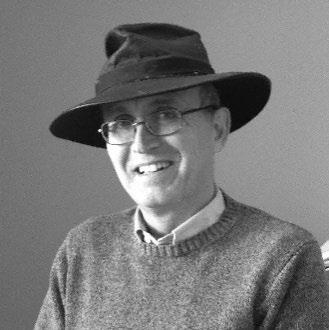
Ron Broadhead received his B.S. in Geology from New Mexico Tech and his M.S. in Geology from the University of Cincinnati where he studied Devonian shales under the late Paul Potter. He worked for Cities Service Oil Company in Tulsa and Oklahoma City and has been with the New Mexico Bureau of Geology and Mineral Resources (a Division of New Mexico Tec h) since 1981. He retired from New Mexico Tech in 2020 and was granted emeritus status by the university. At the Bureau, major research projects have included the New Mexico petroleum source rock project, subsurface and petroleum geology of the Permian, San Juan, Tucumcari, Raton, Las Vegas and Estancia Basins as well as helium - rich and CO2 - rich natural gases of New Mexico. He also supervised the Bureau’s core and subsurface information libraries. He taught subsurface and petroleum geology at New Mexico Tech beginning in 1982 and continues to teach part - time in retirement. His numerous society activities include serving as editor of Search and Discovery, the online journal of AAPG, from 2011 through 2018.
Wednesday, April 9, 2025
8:30 AM
Presenting
The Search is On: Techniques for Natural Hydrogen Exploration Room B
Author Ryan Herz - Thyhsen, HT Geoscience Consulting
Co - Authors Sean R. Scott , Pacific Northwest National Laboratory
Abstract Many natural hydrogen companies currently explore for accumulations of natural Many natural hydrogen companies currently explore for accumulations of natural hydrogen on the continents. While rocks that can generate hydrogen are present underneath continental crust, finding accumulations of the gas has proven difficult. However, exceptionally large volumes of hydrogen are generated by serpentinization of mantle rocks at oceanic core complexes. The largest reservoirs of hydrogen in the subsurface may be associated with these core complexe s. At core complexes, large swaths of mantle rocks at the ocean floor react with seawater to produce hydrogen. Researchers studying the Atlantis Massif have characterized the volume of peridotite undergoing serpentinization, and ~13 million kilograms of hydrogen annually emanate from the Atlantis Massif and surrounding area. While research conducted at the Massif has provided a starting point for natural hydrogen exploration, significant technical work is required to devise a hydrogen play concept and exploration program. Developing a better understanding of the Atlantis Massif hydrogen play concept may provide insight into exploration for similar plays at other oceanic core complexes around the world. If significant volumes of hydrogen can be extracted from oceanic core

complexes, use cases may include ammonia manufacturing, refueling for shipping and other vessels traversing the Atlantic Ocean, and floating computer clusters cooled by water. It is crucially important that resource prospecting in the target areas is conducted in a sustainable manner with minimal impact on the unique geologic features and ecosystems at oceanic core complexes.
Biography of Presenting
Author
9 : 00 AM
Ryan Herz - Thyhsen is a geologist specializing in energy development and geochemistry. He is currently working as a contract geologist in Denver, Colorado, and has most recently worked on natural hydrogen exploration and carbon sequestration projects. Prior to his contract work, Ryan was a geologist for Enerplus Resources where he evaluated and developed resource plays in onshore basins of the United States. Ryan obtained a PhD in Geoscience from the University of Wyoming and a BS in Geology from Haverford College in Pennsylvania. He has received multiple awards for his research including an award by the Department of Energy for his work on water - rock interaction during metasomatic processes. Throughout his career, Ryan’s focus on the energyclimate - water nex us has motivated him to develop sustainable energy solutions.
Wednesday, April 9, 2025
Magnetic and gravity data applications for exploring shallow basement resources, including elemental gases such as hydrogen and helium
Presenting Author Dale E. Bird, Bird Geophysical
Abstract
B
Interpretation methods of magnetic and gravity anomaly data represent costeffective tools for identifying and mapping prospective areas in shallow crystalline basement rocks, which include 2D/3D models and maps generated from analyses of anomaly enhancements. Forward and inverse models allow inferred subsurface geometries and rock properties to be tested by comparing measured magnetic and gravity anomalies to anomalies calculated from the model. Anomaly enhancements, such as filters, derivatives and residu als, may be applied to magnetic or gravity data to reinforce subtle, low - amplitude anomalies at the expense of dominating high - amplitude anomalies. Thus, these subtle anomaly trends can be mapped with confidence and associated with basement structures or fracture zones that may in turn be associated with migration pathways for gases. Basement compositional terranes can also be inferred and mapped from anomaly enhancements. For example, regions of filtered magnetic anomalies, characterized by similar wavelengths and amplitudes, may be associated with basement terranes that include high U - 235/U - 238 granitic or mafic/ultramafic rocks. A review of data surveys and interpretation methods support a range of application examples.

Biography of Presenting
Author
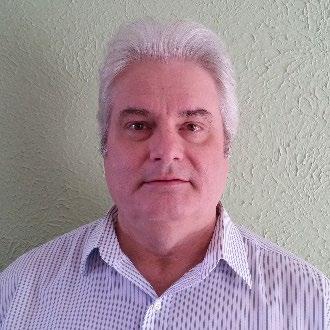
9:30 AM
Presenting
Dale Bird is a geophysical consultant (Bird Geophysical) in Houston with over 25 years’ experience. He earned a Ph.D. from the University of Houston where he is now a Research Associate Professor. Dale is an active member of several professional organizati ons including: AAPG, AGU, GSA, GSH, HGS, and RMAG. He enjoys working with students and he is an avid chess player.
Wednesday, April 9, 2025
Hydrogen transport across sedimentary systems: migration dynamics and sealintegrity
Author Rūta Karolytė , Snowfox Discovery
Co - Authors Euan Macauly, Anran Cheng
Abstract Successful natural hydrogen exploration depends on the ability of top seals to retain substantial gas columns over geological timescales. Unlike in oil and gas exploration, where predicted columns can be calibrated against empirical observations, the paucity of proven natural hydrogen columns leads to uncertainty in the effectiveness of seals for long - term preservation. Seal inte grity is influenced by a combination of lithologic and geomechanical factors, including tectonic stresses and reservoir overpressure, but also fluid properties, such as density, interfacial tension, and contact angle. This study examines the behaviour of p ure hydrogen and mixtures of co - occurring gases, including nitrogen, carbon dioxide, and methane, for different types of seals.
Key parameters, such as interfacial tension and contact angle, are typically determined through laboratory experiments but carry inherent uncertainties when applied to real geological environments. To address this, we performed a sensitivity analysis incor porating the uncertainties, to identify the parameter thresholds that dictate which failure mode (capillary, tensile, or shear) is most critical for hydrogen gas fields under varying conditions. Our approach provides a comprehensive assessment framework of seal integrity across a range of subsurface conditions.
Biography of Presenting
Author Ruta is a Principal Product Scientist at Snowfox Discovery, a natural hydrogen exploration startup. She is developing methodologies to support a full - cycle, firstprinciples approach to hydrogen exploration, with an emphasis on quantifying resource materiality and risk. Previously she was a Postdoctoral Research Fellow at the University of Oxford, working on using noble gas and isotope geochemistry to understand the generation and transport of helium and hydrogen in the subsurface.

10:30 AM
Presenting
Wednesday, April 9, 2025
Reevaluation of the Lyons Sandstone
Formation of Southern Colorado as a Helium Reservoir based on the latest drilling by Blue Star Helium Room A
Author Jeff Aldrich , Sproule
Co - Authors Ginny Gent, Trent Spry, Blue Star Helium
Abstract Blue Star Helium, and its partners, have drilled multiple successful helium wells over the past several years in the Galactica, Pegasus, Voyager, Enterprise and Serenity fields that offset the historic Model Dome Helium Field in Las Animas County, Colorado. The results of these wells now allow a more defined stratigraphy of the Upper Lyons Formation and its relationship to overlaying formations. This talk will document the latest information and stratigraphic relationships of this important, but often ov erlooked reservoir.
Biography of Presenting
Author

Jeffrey Aldrich is a Senior Geoscientist with Sproule International Company (formally MHA Petroleum Consultants). He has over 40 years of global oil and gas experience working from frontier exploration through appraisal to large development projects. His expertise is in unconventional reservoirs, prospect evaluation, reserve determinations, helium reservoirs and multidiscipline and multi - culture team dynamics. Jeff is the primary Petroskills instructor for “Evaluating and Developing Shale Reservoirs (SRE)” , “Prospect and Play Analysis (PPA)” and Unconventional Reserve and Resource Evaluations (URRE). Prior to joining MHA he held various management and technical positions with Dart Energy, a Australian global unconventional gas company, Greenpark Energy, a UK CBM company, PetroSA, the South African national oil company, and American companies, Forest Oil, Maxus Energy and Pennzoil Oil and Gas Company. He has a B.S. Degree in Geology from Vanderbilt University and a M.S. Degree in Geology from Texas A&M University. He is an active member in the AAPG having served as the Vice - President, Sections, President of the DEG and is currently the Chairman of the Board of Datapages, LLC. plus active on several committees. He is also a member of SPE, RMAG, DWLS, DIPS and is both Certified Petroleum Geologist (#3791) and a Licensed Professional Geologist in Texas, Louisiana and Alberta. He is author or co - author of over 30 papers and/or technica l presentations.

11:00 AM
Presenting
Wednesday, April 9, 2025
Helium in the Las Animas Arch Area of Colorado and Kansas: Production and Potential Room A
Author Mike Poirer, Apogee Exploration
Co - Authors Steve Tedesco, Running Foxes Energy , Tim Rynott, 4 Corners Helium LLC
Abstract Helium is commonly found in conjunction with natural (hydrocarbon) gas. In the Las Animas Arch Area of Colorado and Kansas the Morrowan (Lower Pennsylvanian) aged sandstones have proven an excellent source of natural gas and oil. In the Morrow the helium concentration is well documented and follows a mappable distribution. Helium concentrations of up to 5% exist with multiple fields recovering over 50 Bcf.
The Las Animas arch separates the Denver Basin of northwestern Colorado from the Hugoton Embayment of southwestern Kansas. The Arch extends northeastward where it meets the Cambridge Arch and southwestward to the Apishapa uplift. The structural closure of the arch occupies an area of approximately 6,300 sq mi in Cheyenne, Kiowa, Prowers, and Bent Counties of Colorado but the structural influence extends into Wallace, Greeley, and Hamilton Counties in Kansas. The Las Animas Arch has a complex history with nu merous substructures but has been a positive feature since at least the Mississippian.
Sedimentary strata in the subsurface range in age from Upper Cambrian (Reagan Sandstone) through Upper Cretaceous. Upper Cretaceous strata are unconformably overlain by Pleistocene and Holocene alluvium and eolian deposits. Known helium - bearing strata are Upper - Mississippian (Spergen and Saint Louis carbonates), Middle Pennsylvanian (Marmaton), and Lower Pennsylvanian (Morrow age valley fill channel sands). Deeper potential helium deposits exist in the Misener sandstone, Arbuckle dolomites, and Reagan sands tone.
The most productive helium target to date are the fluvial sandstones in the Morrow Formation (100 - 350’ Gross section). Production is concentrated in Cheyenne and Kiowa Counties, but Bent, Kit Carson, Lincoln, and Prowers of Colorado and Wallace, Greeley, and Hamilton also produce. Traps are typically stratigraphic, but many have a structural component. Reservoirs are fluvial channel sandstones filling paleo - valleys. Deposition was on a stable shallow shelf and was greatly influenced by sea level changes. Th ese sands exist extensively over much of the Las Animas Arch. Reservoirs are typically sealed by shale units internal to the Morrow as a function of the depositional type. Helium is noted above the Morrowan unit albeit rarely, implying the Helium seal is t he overlying Atoka comprised of deep marine shales and very low permeability carbonates forming an effective top seal for the Morrow.

Biography of Presenting
Author
11:30 AM
Mr. Poirier is an executive and senior scientist in the oil and gas industry. His extensive experience has been exclusively with small, dynamic, privately funded upstream exploration and development companies. He started his career in 1997 as a Geophysicis t and Seismic Data Manager for Aspect Management, acquiring and exploring the largest single library of 3D seismic data along the Texas and Louisiana Gulf Coast, enjoying an 85% success rate drilling wildcat wells. Mr. Poirier functioned as Exploration Manager for Petrogulf Corporation monetizing development acreage and capitalizing on conventional exploration opportunities in the Gulf Coast, Rocky Mountains, and West Coast. Mr. Poirier served as Evaluation Manager and Vice President of Technology for Source Energy entering 4 unconventional projects domestically and initiated an international project in Colombia where he currently serves as principal geoscientist. Currently Mr. Poirier is President of Apogee Exploration generating conventional oil and helium projects in Southeast Colorado and Kansas and advising helium exploration and development projects in Utah and New Mexico. Mr Poirier has self - generated and sold to industry partners three large projects consisting of 26 individual conventional wells resu lting in 6 new - field discoveries and 3 field extensions including two helium discoveries.
Wednesday, April 9, 2025
Petrophysical Model development and testing of the Permian Chase Group, Hougoton Field, Kansas
Room A
Presenting
Author Christopher Mullen, Bandit Exploration
Co - Authors Matthew Fox - Fox Bros Energy LLC
Abstract Collectively, these layers comprise the geologic inputs for the first edition of a geologic hydrogen prospectivity map of the conterminous United States.
Biography of Presenting
Author
Earned a BS Degree in Geology and Geophysics from the University of WisconsinMadison and a MS Degree in Geology from The University of Texas at El Paso.
Presented at both the North American Helium Conference in 2023 and the GeoConvention 2023 in Canada on North Hugoton Extensions.
Exploring opportunities around Hugoton perimeter for new gas reserves.

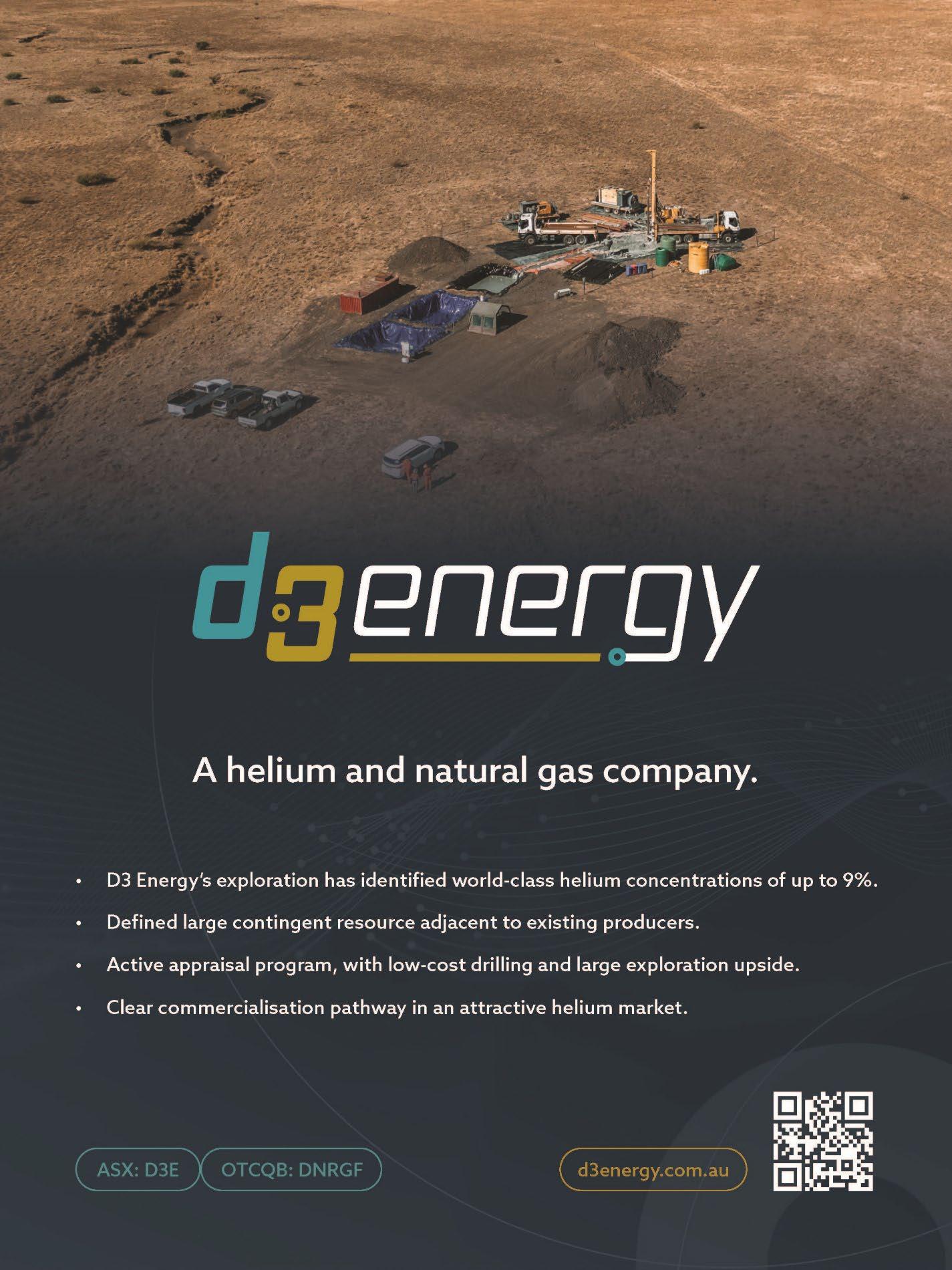

10:30 AM
Wednesday, April 9, 2025
Regional Groundwater Excess Helium Isotopic Compositions as a Tool for Hydrogen and Helium Prospecting
Presenting Author Andrew Hunt, U.S. Geological Survey
Room B
Co - Authors Andrew C. Turner, U.S. Geological Survey, Jessica A. Marcusa, U.S. Geological Survey
Abstract Initial prospecting for areas of helium and hydrogen accumulations can involve a simple evaluation of existing datasets for specific parameters to locate potential targets for exploration. The evaluation of excess helium (Heex) compositions from groundwate r studies is commonplace and extensive datasets exist. Utilizing noble gas data contained in the U.S. Geological Survey’s Aquarius Database, an evaluation of isotopic composition of Heex was performed on a national scale. Helium isotopic compositions were corrected for solubility - based components using neon to produce atmospherically corrected concentrations for Heex and helium isotopic compositions (RC/RA [ 3He/4He sample corrected for atmosphere, normalized to 3He/4He ratio in air]). The isotopic variation observed in Heex values for samples less than 2 times solubility is mainly controlled by tritiogenic derived helium - 3 (3He) dominating the RC/RA values (>1.0 with low He/Ne values). Even samples with low to moderate Heex (less than 5 times solubility) sh ow evidence of tritiogenic 3He and could be interpreted as mixing of modern waters with older water containing higher Heex concentrations. The remaining higher Heex values (greater than 5 times solubility) fall into two to three approximate end - member comp ositions. Samples with high RC/RA values of approximately 1.0 and greater appear to be associated with large scale hydrothermal/magmatic activity and can be characterized as interaction with modern and older magmatic based systems (e.g., samples from Jackson Dome, Rio Grande Rift, and Yellowstone National Park). The remaining samples fall into a grouping near crustal production values of helium at approximately 0.01 RC/RA but extending to values ranging from 0.1 to 0.5+. Values greater than calculated produ ction ratios (~0.02 RC/RA) are typically interpreted as mixing between a mid - ocean ridge basalt type helium endmembers and crustal production endmembers, but review of spatial distributions of these values reveals very uncharacteristic patterns that cannot be explained by simple two component mixing. These elevated values above calculated production may represent their own endmember composition. The uncharacteristic patterns outline areas of potentially elevated helium concentrations as well as possible geo logically based hydrogen accumulations. Presented here is an examination of the use of preexisting datasets to evaluate potential for helium and hydrogen prospecting areas not easily evaluated from near surface geologic exploration techniques.

Biography of Presenting
Author
11:00 AM 11:30 AM
Andrew G. Hunt entered service with the U.S. Geological Survey as a Mendenhall Post - Doctoral Fellow in 2001, working in the Crustal Geophysics and Geochemistry Science Center, Denver, Colorado. He is now the branch chief of Economic and Framework Geology with the Geology - Geophysics - Geochemistry Science Center and lead researcher/laboratory manager for the USGS Noble Gas Laboratory. As member of the laboratory, his current research interests include the application of noble gas geochemistry to groundwater dating, basin - scale fluid - flow studies, and natural gas hydrate research, volcanic hazard monitoring, geothermal system characterization, carbon sequestration, geologically sourced hydrogen and characterization of ore forming mineral systems by fluid inclusion gas chemistry.
Wednesday, April 9, 2025
Mapping Geologic Hydrogen Prospectivity in the Conterminous United States
B
Presenting
Author Jane Hearon, U.S. Geological Survey
Co - Authors Sarah Gelman, U.S. Geological Survey , Scott Kinney, U.S. Geological Survey , Robert Miller, U.S. Geological Survey, Christopher Skinner, U.S. Geological Survey, Geoffrey S. Ellis , U.S. Geological Survey
Abstract Part I: The geologic and geophysical inputs necessary for the favorability mapping of geologic hydrogen systems are presented here in support of the U.S. Geological Survey's efforts to create the first map of geologic hydrogen prospectivity in the conterminous United States. The geologic hydrogen sy stem model has several components that are required for a viable accumulation: 1) a source of natural hydrogen, 2) a reservoir to store hydrogen in the subsurface, and 3) a competent seal to retain the hydrogen and prevent leakage to the Earth’s surface. I n total, there are 21 geologic layers in the model and the distribution of chance of success values are assigned to each layer based on our interpretation of the geologic hydrogen model and our comprehensive knowledge of the United States’ geology.
Part II: Natural, or geologic, hydrogen may be a future low - carbon subsurface energy resource. To assess the potential for geologic hydrogen throughout the conterminous United States, the U.S. Geological Survey has developed a methodology to model subsurface hydrogen systems. Following a similar method developed for petroleum systems, Chance of Sufficiency (COS) is defined here as a fractional probability that a viable accumulation of natural hydrogen can exist in the subsurface. Several components make up the geologic hydrogen system model and are required for viable accumulations: 1) a source of natural hydrogen, 2) a reservoir to store hydrogen, and 3) a competent seal to retain hydrogen and prevent mechanical or capillary leakage to the Earth’s surface. The geologic characterization of these components is described in a companion abstract

(Hearon et al., this conference), while the motivation and broad - scale results are discussed in another companion abstract (Ellis et al., this conference). This contribution will focus on the quantitative methods developed to model hydrogen systems, its co mponents, sub - components, and COS analysis, ultimately generating the first edition of a natural hydrogen prospectivity map of the conterminous United States.
Lateral migration of hydrogen in the subsurface is presumed to be possible, analogous to the migration of other buoyant subsurface fluids (i.e., oil and gas). While migration can occur in both sedimentary and non - sedimentary settings, migration pathways likely follow stratigraphic boundaries in sedimentary settings. In contrast, fractures likely dictate flow in crystalline rocks and would be difficult to predict on a large scale. Here, we limit our initial focus to only sedimentary migration pathways. Using a continental - scale map of total sedimentary thickness to generate an elevation map of the top of basement (or the floor of sedimentary rocks), we calculate fluid flow paths. When potential sources of geologic hydrogen occur under or within sedimentary basins, hydrogen is presumed to migrate laterally and up - dip following the contours of basement topography, allowing an area of broad spatial extent to have exposure to migrating hydrogen. Our methodology further considers the potential for a reduction in hydrogen access as distance increases away from possible sources due to consumption by biotic and abiotic processes.
The geologic hydrogen system COS is calculated by multiplying the individual component COS values (source including migration, reservoir, and seal) which were generated from a series of 21 geologic sub - components (see Hearon et al., this conference) and their individual COS values. Since sub - components may overlap spatially (for example, a source of hydrogen due to serpentinization, and a source due to radiolysis), the sub - components are combined by multiplying chances of failure, rather than chances of success, ultimately increasing the component COS due to this overlap. Finally, uncertainty is quantified by assigning low, mid, and high cases to create distributions of sub - component COS values, which are then propagated in a Monte Carlo method to generate s tochastic outcomes where the final results are presented as P90, P50, and P10 maps for geologic hydrogen prospectivity.
Biography of Presenting Author

Jane Hearon is a geologist with the U.S. Geological Survey's Central Energy Science Center in Denver, CO. She conducts geologic research and assessments on petroleum systems and geologic hydrogen.

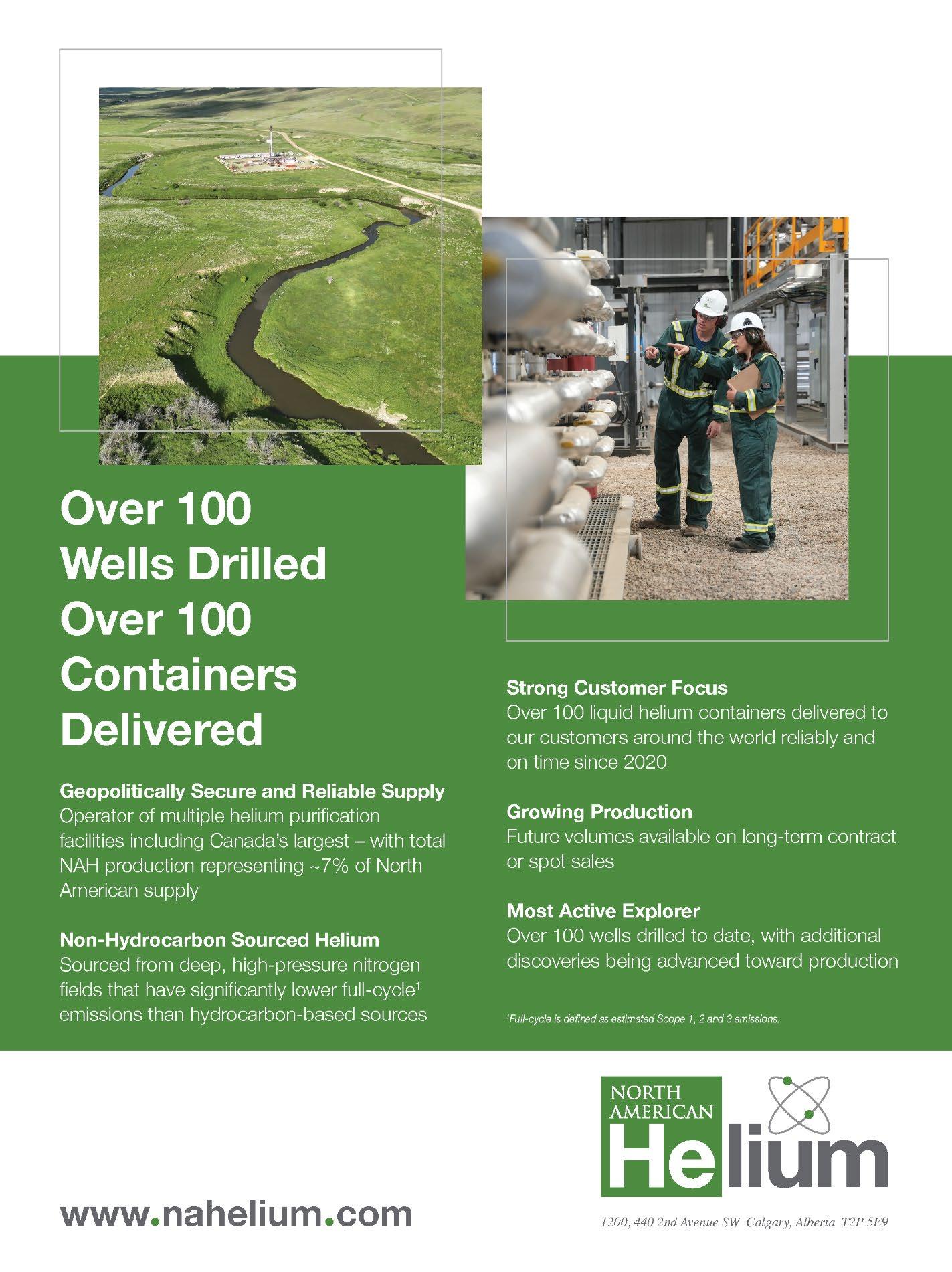

12:30 PM
Presenting
Wednesday, April 9, 2025
Potential Synergies in Exploration for Natural Hydrogen and Helium
Author Geoffrey Ellis, U.S. Geological Survey
Room A
Abstract Exploration for natural hydrogen has substantially increased in recent years due to its potential as a low - carbon energy resource to replace fossil fuels. Anecdotal reports suggest that there may be over 100 companies actively engaged in collecting data and acquiring acreage, with more than a dozen wells purported to have been drilled. The nascent stage of our understanding of the potential for natural hydrogen resources and the uncertainty related to the efficacy of exploration strategies contribute to a perception of high risk. Moreover, economic evaluation of natural hydrogen prospects is challenging and imprecise, which further contributes to uncertainty on the viability of potential targets. The potential for co - production of valuable commodities associated with natural hydrogen is generally viewed as an important factor for mitigating some of these risks.
One widely recognized potential candidate for co - production with natural hydrogen is helium. The decay of radiogenic minerals in crustal rocks is known to be a major source of helium. If water is present during this process, there is the potential for simultaneous production of hydrogen through radiolysis. Additionally, mantle derived fluids are capable of delivering helium to the Earth’s crust and may also contain substantial concentrations of hydrogen. Recent announcements by the company Gold Hydrogen of gases containing up to 95.8% hydrogen and as much as 36.9% helium in discrete gas samples from exploration wells in the Yorke Peninsula in South Australia have attracted substantial interest in the concept of co - production of natural hydrogen and helium. This presentation will discuss the concept of the hydrogen system, with its requisite components (i.e., source, reservoir, trap, etc.), and will highlight the specific areas that are directly applicable to helium exploration. The tools and strategies that may be applied in these exploration efforts will also be addressed, as well as the current knowledge gaps and opportunities for future advancements.
Biography of Presenting Author

Geoffrey Ellis is a research geologist and the project chief of the Potential for Geologic Hydrogen Resources project within the Energy Resources Program (ERP) of the U.S. Geological Survey. He is also an affiliated faculty member in the Department of Geology and Geological Engineering at the Colorado School of Mines. He holds a bachelor’s degree in geological sciences from Cornell University, a master’s degree in geochemistry from the Colorado School of Mines, and a doctorate in marine geology and geophysics from the University of Miami. Prior to joining the ERP, he worked as a staff scientist in the Division of Chemistry and Chemical Eng ineering at the California Institute of Technology, as a research

chemist in the Water Resources Division of the U.S. Geological Survey, and as a consultant in environmental and resource exploration geochemistry.
Wednesday, April 9, 2025
1:30 PM
Presenting
Expanding the Giant Part 2: The Salt Compartmentalization and Gas Migration Room A
Author Matthew Fox , Fox Bros Energy
Co - Authors Chris Mullen , Bandit Exploration
Abstract Reservoir structure defines productive/prospective limits in any structural hydrocarbon play. The Hugoton Field's hydrocarbon and helium gas charged Chase Group Reservoirs' structural compartments are well documented and universally agreed upon to be at discrete structural boundaries from 1,000' above sea level in the west down to sea level in the east. Across the Hugoton Gas Area, the Chase Group’s Reservoirs’ structure directly underlies and parallels the base of the Leonard salt, that seal's the gas system, and these conforming str uctures maintain the Hugoton’s uniform tilted gas - water contact and uniform reservoir pressure in the Chase Group Reservoirs. These structural components of the Hugoton Gas Play are noted across all Hugoton literature, however, their closure structure is u nknown in terms of its formation timing and structural deformation mechanism. In fact, Sorenson (2009) published the most recent comprehensive Hugoton review and he concluded : "Problematic aspects of the PanhandleHugoton, such as low reservoir pressures, uneven fluid contacts, and variations in fluid compositions, must be considered from a regional perspective if a realistic solution is to be obtained."
Regional salt tectonic restoration of Southwest Kansas constrains the Hugoton's salt sealing structural closure's timing to Miocene and the structural deformation mechanism was by salt - withdrawal under sediment loading of the Ogallala Alluvial Fan. Salt wi thdrawal progressed from south to north during the Miocene under the Arkansas Drainage Basin’s alluvial sediment input load (secondary minibasin [Jackson and Hudec, 2017]) and salt withdrawal continues, present day, to inflate the salt pillow observed over the south end of Bradshaw Field. Miocene halokinetic salt tectonic deformation established a regional salt weld at the base of salt, which manufactured a concave closure structural trap that directly overlies and salt seals the Chase Group Reservoirs across the entire Hugoton Field. Thus the Miocene salt deformation formed the Hugoton Field’s regional sealing structure, that trapped the Hugoton’s regional gas compartment.
Biography of Presenting Author
Earned a BS Degree in Geology and Geophysics from the University of WisconsinMadison and a MS Degree in Geology from The University of Texas at El Paso.
Presented at both the North American Helium Conference in 2023 and the GeoConvention 2023 in Canada on North Hugoton Extensions.
Exploring opportunities around Hugoton perimeter for new gas reserves.

2:00 PM
Presenting
Wednesday, April 9, 2025
Hydrogen and Helium Potential, Holbrook Basin, Arizona USA
Author Robert Sterling, Confluence Resources
Co - Authors Scott Sears , Nighthawk Resources
Room A
Abstract The geologic hydrogen community has focused on the Mid Continent Rift (“MCR”) in the last few years in North America in the search for reserves. Surface geochemical data, well data and geologic models are guiding this activity. To date, no commercial results have been announced.
In the Holbrook Basin in northeast Arizona, the authors began an exploration project for helium in 2021. Four exploratory wells have been drilled to date with helium and hydrogen found in the target reservoirs in each well, but mechanical issues with each well have prevented commercial production. Four separate surface geochemical surveys were conducted during this effort showing anomalous helium and hydrogen on the surface. Though the original search was for helium, the presence of so much hydrogen caused the authors to consider a model for its generation in this area.
The Holbrook Basin is on the southern extent of the Colorado Plateau in the Four Corners area of the USA where the borders of Arizona, Utah, Colorado and New Mexico meet. The area has long been a helium rich area, with many gas fields producing associated helium. The sedimentary rocks in the Holbrook Basin consist of Triassic to Paleozoic rocks. The area is underlain by the Yavapai/Mazatzal basement terrain (1.6 - 1.8 billion years). In the last 10 million years, a segment of the East Pacific Rise spreading center was subducted underneath the North American Plate (“NAP”)_following the Farallon Plate. Volcanism associated with the Rio Grande Rift system may have been intruded into the Yavapai/Mazatzal terrain as the active spreading sender was moved under the NAP. This mafic rock intruded into the existing basement provides the opportunity for hydrogen generation in the Holbrook Basin.
Biography of Presenting
Author
Rob has been with two private equity companies, Confluence and Cirque, since 2007. Prior employment included 13 years with Enron/EOG in Denver as a Division Geologic Specialist, 9 years as VP Exploration for NWEC in Bakersfield and started out as a geolog ist with Argo Petroleum in Los Angeles.

2:30 PM
Presenting
Wednesday, April 9, 2025
Geochemistry of Well Gases From the Holbrook Basin, Arizona
Author Andrew Turner, U.S. Geological Survey
Room A
Co - Authors Andrew G. Hunt, U.S. Geological Survey, Scott Sears, Nighthawk Resources, Robert Sterling, Confluence Resources, Geoffrey S. Ellis, U.S. Geological Survey
Abstract Helium is a critical resource with important economic value in the scientific, medical, and industrial sectors, and it is increasingly the target of extensive exploration efforts. Alongside helium, interest in geologic hydrogen has likewise increased recen tly due to its potential as a low - carbon source of energy. Helium and hydrogen are observed in significant concentrations together in certain geological settings, making these sites of particular interest for renewed study. Understanding the mechanisms responsible for the subsurface generation and accumulation of helium and hydrogen is essential for assessing their production potential. Examining the geological, geophysical, and geochemical state of sites with known helium and hydrogen abundance can provide empirical clues about the origin of these gases. In this work, we examine the Holbrook Basin, a large basin in Northeastern Arizona, using well gas samples obtained from Confluence Resources. At the U.S. Geological Survey in Denver, CO, concentrations of major molecular species, stable isotopes, and noble gas isotopic compositions were measured to identify contributions from crustal, mantle, atmospheric, and other sources. With this framework in mind, we compare our results to geochemical data from other basins and aquifers across the United States to place the Holbrook Basin system in context. We will then explore the implications of our isotopic and concentration data to determine potential accumulation mechanisms for both helium and hydrogen in this basin and provide valuable insights for future resource exploration.
Biography of Presenting
Author

Andrew Turner is a Mendenhall Postdoctoral Fellow at the U.S. Geological Survey in Denver, Colorado. His research interests involve the use of stable and clumped isotopes to understand the formation and basic geochemistry of light alkanes, hydrogen, water, and carbonates. At the USGS, he is working on using surface geochemistry and stable isotopes to study the formation, migration, and interaction of natural hydrogen with other species in subsurface and soil gases.

Wednesday, April 9, 2025
1:30 PM
Presenting
Geochemical Characterization of the Geological - Hydrogen Potential of Northeastern Minnesota Room B
Author Valentine Combaubon, University of Colorad o
Co - Authors Eric E Ellison , University of Colorado, Alexis S Templeton , University of Colorado
Abstract The Mid - Continent Rift (MCR) extends from Kansas to the Lake Superior region and has been targeted in the past decades for geological hydrogen exploration. In Northeastern Minnesota the MCR is composed of outcropping Fe - rich igneous rocks known for their significant ore mineralization contents (Ni, Cu, PGE, Au). Through sampling of six groundwater wells, we have found that highly alkaline and reducing groundwaters are associated with these rocks, which can be markers for water - rock interactions including serpentinization and associated geological hydrogen production. The main gas species, namely methane (CH4), hydrogen (H2), and ethane (C2H6), as well as methane carbon isotopic signature were characterized respectively by gas chromatography (GC), and cavity ringdown spectroscopy (Picarro analyzer). The water chemistry as well as dissolved inorganic and organic carbon contents were characterized by inductively coupled plasma - optical emission spectroscopy (ICP - OES) and isotope ratio mass spectroscopy (IRMS). P reserved drill - core samples from exploration wells reaching the same geological units as the groundwater wells have been sampled and studied to characterize the H2 - generation potential of the system. Here we will present the results of this geochemical and petrological study and propose a first comprehensive picture of geological hydrogen production and cycling in the subsurface rocks in Northeastern Minnesota.
Biography of Presenting
Author

The primary speaker earned a PhD in Earth Sciences from the French Institute for New Energies (IFPEN : France) and the University of Pau (UPPA : France) with a specialization in igneous petrology and gas geochemistry related to geological hydrogen generation. The primary speaker, now a postdoctoral associate in the Department of Geological Sciences at the University of Colorado - Boulder, works mainly on the Mid - Continent Rift (MCR) in Minnesota. The main goal of her postdoctoral project is to characterize the geological - H2 potential of the Minnesota part of the MCR as well as to provide a better understanding of the H2 cycling in subsurface rocks.

Wednesday, April 9, 2025
2:00 PM
Presenting
Exploring the potential of Banded Iron Formations for geologic H2 generation
Author Olivier Sissman, IFP Energies Nouvelles
Room B
Co - Authors Valentine Combaudon , University of Colorado , Latisha Brengman , University of Minnesota Duluth
Abstract It is now well established that geologic H2 is emitted from a variety of intracontinental settings, through potentially different generation processes from radiolysis to fluid - rock interactions. As exploration for this new resource is starting on every continent, focus is placed on mafic and ultramafic intrusions for their high iron (II) content and potential to generate H2 through serpentinization. This reaction has already been well documented on the North - American MidContinent Rift, composed of a multi - kilometric scale accumulation of mafic rocks, particularly on the southernmost part of the rift in Kansas, because of occurrences of H2 emissions in old wells. The northernmost part of the rift, however, remains to be explored, particularly in the Lake Superior region. Though mafic and ultramafic rocks are also present, little attention is being given to Banded Iron Formation (BIF), despite their iron - rich mineralogy. This presentation will examine the H2 generating potential of these formations, by reviewing the mineralogy and of various BIFs around the planet, and specifically comparing the Australian BIFs, around which H2 emissions have been documented, and the formations found in the Lake Superior region. The uncertainties about the existence of economical reservoirs and efficient cap rocks in those environments will also be discussed.
Biography of Presenting
Author
Olivier Sissmann is a geochemist who obtained a BSc in Geology from the University of Queensland, Australia, before travelling back to France to obtain a PhD on CO2 mineral storage from Institut de Physique du Globe de Paris and Ecole Normale Supérieure. He then joined IFP Energies Nouvelles as a research scientist, where he has been working on native H2 emissions ever since, collecting associated rock and gas samples around the globe whenever the opportunity arose. He remains an associate lecturer at Institut de Physique du Globe de Paris, where he teaches about subsurface energy resources, and is coleader of the IEA Task 49 on Native Hydrogen. He specializes in stable isotope analysis, HP/HT experiments, and fluid rock interactions modeling. He’s on a quest to discover which processes control the formation of abiotic organic compounds and the appearance of the building blocks of life, in H2 - rich subsurface environments. When he’s not doing any of that, he loves to play a good game of Go or delve into sci - fi.

Wednesday, April 9, 2025
2:30:00 PM
Building a Regulatory Framework for Helium and Hydrogen Production from the Ground Up in Minnesota Room B
Presenting Author Gwen Brodsky, Aota Technical, LLC & Don Elsenheimer , Minnesota Department of Natural Resources
Abstract In May 2024, the Minnesota legislature fast - tracked rulemaking to regulate oil and gas production in the state. Without a prior history of production, Minnesota had no oil and gas regulations. The legislature also gave a multi - agency technical advisory committee 7 months to develop a temporary regulatory framework that, after legislative approval, would allow for permitting while rules were being written for the oil and gas sector. The urgency was driven by two major discoveries in the state. First, high - grade helium was discovered in northeast Minnesota. Second, the Midcontinent Rift System, which traverses the length of the state, was identified as one of the leading prospects for geologic hydrogen in North America.
The presentation will describe the temporary regulatory framework that Minnesota agencies presented to the Minnesota legislature in January 2025. The temporary regulatory framework benefited from both the regulatory experience of oil and gas - producing stat es and the regulation of Minnesota’s own 140 - year old mining industry. The presentation will provide an update on the resulting legislation and progress toward long - term oil and gas rules. Finally, the presentation will demonstrate Minnesota’s readiness for this unique opportunity to develop new helium and hydrogen resources while protecting the state’s abundant natural resources. Details about Minnesota’s regulatory framework can be found here: https://gasproductionrules.mn.gov/.
Biography of Presenting Author

Ms. Brodsky is principal and founder of Aota Technical, LLC. Aota specializes in steering complex projects from concept to construction in an all of the above energy environment for helium, carbon storage, and oil and gas. Ms. Brodsky is a leader in pre - pe rmit planning and strategy, permitting, agency consultations, regulatory compliance, and project management. Her expertise is in navigating complicated and sometimes overlapping federal, state, and local requirements to obtain project approvals. She brings unique insight and skill sets from both sides of the regulatory environment. In the private sector, Ms. Brodsky is a former Operations Manager and Principal for the environmental engineering firm, Tetra Tech, Inc. In the government sector, she was a forme r lead in air, water quality, and tribal programs for the U.S. EPA Region 8 Office, U.S. EPA Office of Air Quality Planning and Standards, U.S. EPA Montana Operations Office, and state of Montana Department of Environmental Quality.


Don Elsenheimer, Ph.D, manages the gas production rulemaking and regulatory program in the Lands and Minerals Division at the Minnesota Department of Natural Resources. Based in St. Paul, Don leads the DNR team writing rules for permitting gas production p rojects, pooling and spacing, and leasing state lands for oil and gas exploration and development. He also led a multi - agency technical advisory team tasked with developing a temporary regulatory framework for gas production during rulemaking and served as that committee’s technical lead. Before taking on these roles Don led the DNR’s non - ferrous metallic minerals research program, which focuses on potential hardrock mineral resources within state - managed mineral rights. He received a B.A. in Geophysical Sciences from the University of Chicago and M.S. and Ph.D degrees from the University of Wisconsin - Madison. Don was a Postdoctoral Fellow at the Geological Survey of Japan, and an Assistant Professor of Geology at Stockton University of New Jersey. Prior to joining the DNR in 2006, Don worked for a decade in the Twin Cities environmental consulting industry.


Wednesday, April 9, 2025
3:30 PM
Presenting
Helium East of the Mississippi River in North America Room A
Author Steven Tedesco , Running Foxes Energy Inc.
Abstract Helium (He) exploration in the eastern half of North America has been limited to Southwestern Ontario during WWI and shortly thereafter, and recently around the Rome Trough, Kentucky. There is an extensive USGS database for He in some areas of the eastern North America but much of the data has to be considered potentially unusable. This is due to poor quality and accuracy of early laboratory technology, collection methodology and quality control. Southwestern Ontario was originally the focus by the British in WWI to extract He. By the time He extraction technology was perfected the existing gas fields in southwestern Ontario at the time were depleted and the British moved on to the Bow Island Ar ch area in Alberta and Saskatchewan. Since then, a number of shallow productive natural gas Cambrian sandstone fields in Southwestern Ontario have been found and economic He is present (based on today’s prices). Many of these fields were discovered in the 60s, 70s and 80s but since then exploration in the area has declined dramatically. The eastern limbs of the Mid - Continent Rift system which extends through the center of Michigan and down into Ohio, Indiana, Kentucky, Tennessee and Alabama has scattered He data. In Michigan, several shallow gas productive Mississippian Stray sandstone fields that directly overlie the Mid - Continent Rift had economic He (based on present prices). The Rome Trough in Central and Eastern Kentucky has significant He (>1%) in a t least two wells from Cambrian sandstones. One well was recently completed in the Cambrian sandstone that initially flowed approximately 2 MMCFGPD and fracture stimulated resulting in over 15 MMCFGPD with 1% He. The well produced He for six months and watered out. The host gas in the Cambrian sandstones in the Rome Trough seems to be mainly nitrogen. The rift segments in Indiana, Ohio, south central Kentucky, Tennessee and northern Alabama have limited or no testing and no He data analysis. These rift segments potentially are significant opportunity to find new He reserves.
Biography of Presenting Author

Dr. Steven Tedesco has over 40 years’ experience in the energy industry including coal, helium, oil, gas, hydrogen, wind and solar. Dr. Tedesco operates Running Foxes Energy Inc. which focuses on waterflooding of shallow oil reservoirs, coal bed methane and conventional oil and gas production in the Uncompahgre Uplift, Powder River, Williston, Denver, Forest City and Cherokee basins, USA. Dr. Tedesco is a manager with Ultimate Carbon Storage that is involved in generating and selling carbon credits from plugging marginal, abandoned or orphaned wells. Dr. Tedesco is the US representative for MRE Wind and Solar based out of Centennial, Colorado that is in the process of building wind, solar and battery facilities in Arizona, New Mexico, Kansas, Colorado an d Utah. He is also Chief Science Officer for Energid Energy Inc. which focuses on converting

natural gas assets to, hydrogen, ammonia, electricity and crypto - mining. Dr. Tedesco has a BS in Geology from Northeastern University in Boston, a MS in Geology from Southern Illinois University at Carbondale, IL, and a PhD in Geology with a minor in Petroleum Engineering from the Colorado School of Mines., He has published numerous articles and presented several talks at international industry meetings on coal bed methane, surface geochemistry, helium, hydrogen, structural geology, petroleum engineering, and stratigraphy. Dr. Tedesco has been CEO and President of a Canadian Junior Public Company, Admiral Bay Resources now known as PredictMedix. He was involved in taking two other companies public on the OTC, General Cannabis and Epsilon Energy. Dr. Tedesc o has published the only text book specifically focused on the use of surface geochemistry in petroleum exploration that was published in 1994. Dr. Tedesco recently published the only book on helium, geology and associated gases by Elsevier Publishing that was released in April, 2022. Dr. Tedesco has made numerous presentations at conventions in North America, Europe, Middle East and Australia.
Wednesday, April 9, 2025
4:00 PM
The Geology of the Topaz Helium Project, Duluth Complex, Minnesota Room A
Presenting Author Nick Sch o field , Pulsar Helium, Inc.
Abstract The Topaz Helium Project, located within the Duluth Complex of northeastern Minnesota, represents a unique geological setting for helium accumulation. Situated within the 1.1 billion - year - old Mid - Continent Rift Zone (MCRZ), the project area is characterized by Precambrian rocks, including the Bald Eagle Intrusion (BEI) of the Duluth Complex, which forms part of the Keweenawan Supergroup.
Appraisal well Jetstream #1 encountered high - grade helium (8.7 - 14.5%) at a depth of approximately 670 metres (2198 ft), with flow rates of 821,000 cubic feet per day. The well was recently deepened in Jan 25’ to 1,555 metres (> 5000 ft) and preliminary gas data suggests that the several new zones of helium - bearing reservoir have been identified. Geophysical surveys suggest an extended gasfilled fracture network deeper and more laterally extensive than initially penetrated.
The exact source of Topaz Helium was potentially the uranium - and thorium - rich Giants Range batholith, with the Duluth Complex subsequently acting as both reservoir and seal to the helium. This unconventional trap is facilitated by the stable tectonic conditions prevailing over the last billion years.
The Topaz Project challenges conventional helium exploration models, as it lacks typical sedimentary reservoir rocks. The discovery's implications extend beyond local significance, potentially redefining global helium exploration paradigms and highlighting the potential significance of old metamorphic terrains in hosting helium. Ongoing appraisal, including the deepening of Jetstream #1 and drilling of

Jetstream #2, coupled with further flow testing over the coming months aims to delineate the full extent of this potentially world - class helium resource.
Biography of Presenting
Author
Prof. Nick Schofield is chief geologist with Pulsar Helium and is a tenured Professor of Igneous and Petroleum Geology at the University of Aberdeen. Nick is a multi - award winning highly applied scientist at the forefront of aiding industry in understanding hard rock geology in the subsurface globally, using a variety of field, well and geophysical techniques (incl. seismic reflection). He gained his undergraduate degree in Geology from the University of Edinburgh in 2004, before undertaking a PhD at the University of Birmingham investigating the emplacement of sill intrusions. He works closely with industry on igneous related aspects of the subsurface in E&P and has worked in numerous areas globally, incl. undertaking field seasons in the US, South Africa and Kenya
Wednesday, April 9, 2025
4:30 PM On the Estimation of Geologic Hydrogen and Helium Resources in Texas Room A
Presenting
Author Saad Saleh , Bureau of Economic Geology, The University of Texas at Austin
Co - Authors Lily Horne, Bureau of Economic Geology at the University of Texas at Austin, Toti Larson, Bureau of Economic Geology at the University of Texas at Austin , Ning Lin, Bureau of Economic Geology at the University of Texas at Austin, Nur Schuba, Bureau of Economic Geology at the University of Texas at Austin, Tongwei Zhang, Bureau of Economic Geology at the University of Texas at Austin, Mark Shuster , Bureau of Economic Geology at the University of Texas at Austin
Abstract The global and national demand for hydrogen and helium is expected to grow substantially in the coming few decades. Motivated by the realization that current economically feasible extraction methods for both gases may be insufficient for supply chains to keep up with the projected increase in demand, the Bureau of Economic Geology at the University of Texas at Austin has recently launched a comprehensive study to map geologic hydrogen and helium resources in the state of Texas. Acknowledging that a significant amount of information is already publicly available on this topic but unfortunately scattered in various locations, Phase 1 of the study is focused on employing data compilation techniques to capture such information and use it in a qualitative resou rce estimation exercise. Phase 2, on the other hand, aims to employ an intensive data - driven approach to fill the gaps in existing knowledge and connect the dots between various components of the so - called subsurface hydrogen and helium factories. This is an analogous approach to the one established in the oil and gas industry where a deep understanding of the system’s elements – source rocks, migration, reservoirs, seals, traps, and timing – provides the foundation for a quantitative estimation of the re sources. To this end, we employ a suite of petrological, geochemical, geophysical, and surface measurement tools to uncover the nature of hydrogen and helium subsurface systems. In this talk, we elaborate on the approach outlined above and highlight a fe w early results.

Biography of Presenting
Author

Dr. Saleh received a PhD in Electrical and Computer Engineering from the University of Wisconsin - Madison in 1991. He joined Shell Development Company in Houston in 1991 and served as a research engineer until 2003 focusing on a variety of research areas in seismic data processing and interpretation. From 2004 to 2008, Dr. Saleh led the New Detection Methods R&D team in Shell International E&P Inc. with responsibility for developing and deploying new geophysical techniques based on controlled - source electromagnetics, remote sensing systems, and high - resolution gravimetric and magnetic capabilities. From 2009 to 2018, Dr. Saleh was General Manager of Shell’s Integrated Geoscience R&D program, a large international multi - disciplinary team focused on the application of computational science and machine learning methods to integrate advances in geology, geophysics, and petrophysics. From 2019 to 2021, Dr. Saleh was Professor in the Practice at Rice University in Houston. Since 2021, he has been a faculty member at the University of Texas at Austin where he holds the positions of Professor of Practice at the Electrical and Computer Engineering Depart ment and Research Consultant at the Bureau of Economic Geology.
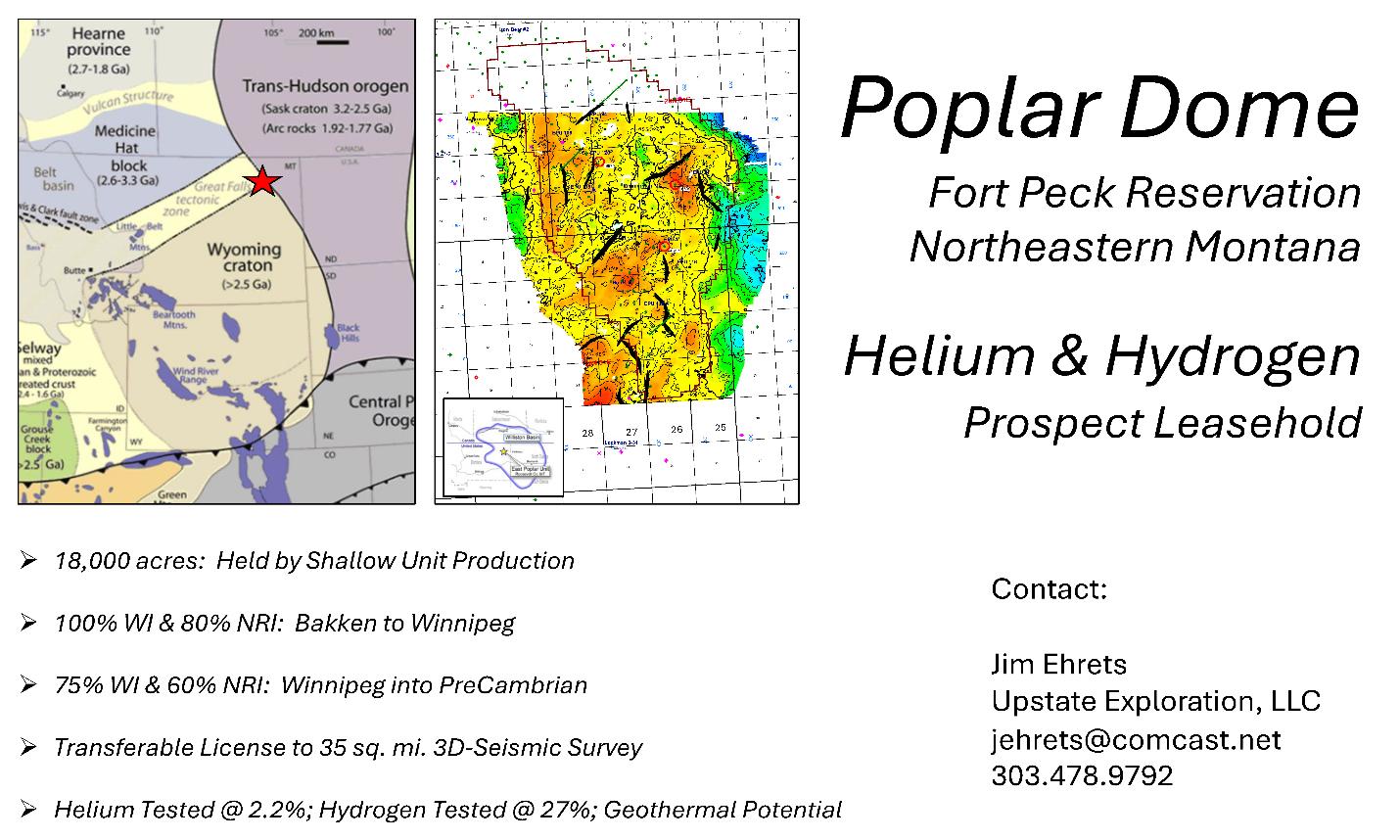

Wednesday, April 9, 2025
3:30 PM
Presenting
Exploring Natural Hydrogen in the South West of France
Author Beno î t Hauville, 45 - 8 ENERG Y
Room B
Abstract Natural hydrogen, naturally produced by subsurface processes, is known since a long time but was mainly thought to be a geological curiosity encountered in very specific areas such as black smokers in medio - oceanic ridges.
The impressive emergence of H2 in the energy transition enabled a significant focus on it and many other natural occurrences in diversified geological contexts were since discovered and are still be reported every day by the scientific community.
Even if manufactured H2 (SMR, water electrolysis) is today the main considered solution in ongoing or foreseen production projects, natural H2 could be an important contributor offering many economic and environmental advantages. Exploring for such resources could therefore be a real game changer but being still a quite new and emerging discipline, using the right tools and methodology is still a challenge to move from building punctual occurrences catalogue at worldwide scale towards a ready to drill prosp ect with a real industrial application in case of effective discovery.
45 - 8 ENERGY, pioneer in naturel hydrogen exploration since 2017, has matured a geological screening strategy which led to the shortlisting of the Aquitaine Basin located South - West of France followed by 2 applications for natural hydrogen exploration together with its partner STORENGY, made possible since the integration of the resource in the French mining code in 2022.
The area holds indeed significant natural hydrogen potential :
• Area has been poorly explored in the past, hydrocarbon source rocks being thought to be overmature. Multiple undrilled structural closures were therefore identified after revising the legacy 2D seismics.
• A working hydrogen system is strongly inferred by the existence of natural hydrogen rich seeps evidenced along major faults by soil gas sampling surveys carried out by academics or by the high hydrogen fractions in water reported in the few legacy well tes ts carried out in this area. Most probable source rock for this hydrogen is an uplifted mantle wedge, currently in ideal conditions for serpentinization.
• Effective reservoirs and seals are proven regionally in the Lower Cretaceous and Upper Jurassic (post - salt plays) as well as Triassic/Paleozoic (pre - salt play).
A risk reduction exploration phase will be carried out firstly with new data acquisition prior drilling decision that could be taken at relatively early stage given the numerous encouraging data already in hand.

Biography of Presenting
Author

Co - founder and chief executive of the French company 45 - 8 ENERGY, Benoît Hauville has a geoscience background (MSc in Geology and Geophysics) and had been active in the O&G industry within the French company TotalEnergies for nearly 15 years in various places of the world (Europe, Asia, Africa, South America). Being aware of the today’s and future challenge to supply helium to the numerous industries which are now depending on it, he is now redeploying his subsurface competencies to industrial gases exploration in Europe with ambition to produce helium and natural hydrogen locally, to get rid of transportations constrains and propose low carbon footprint supplies.
Wednesday, April 9, 2025
4: 00 PM Code Comparison Study for Modeling Geologic Hydrogen
Presenting
Author Mark White , Kansas Geological Survey
Room B
Co - Authors Joshua White, Lawrence Livermore National Laboratory, Ryan Haagenson, Pacific Northwest National Laboratory, Julia Camargo, Pacific Northwest National Laboratoy, Brendan Bream, Kansas Geolog ical Survey
Abstract Numerical modeling of coupled thermal, hydrological, geomechanical, and geochemical processes in the subsurface are well established in several application areas, such as groundwater, hydrothermal, carbon sequestration in deep saline reservoirs, oil and gas recovery. Even more niche application areas, such as enhanced oil recovery, enhanced geothermal systems, natural gas hydrates, have well established modeling approaches and solution schemes. Code comparison studies have proven beneficial in gaining acceptance and building confidence in subsurface simulators, eliminating coding bugs, demonstrating capabilities, and developing benchmark problems for future developme nt activities. For example, in the realm of geologic storage of carbon dioxide the GeoSeq and Stuttgart international code comparison studies were foundational in establishing modeling approaches for carbon sequestration in deep saline reservoirs. These studies helped to transform carbon sequestration modeling from the status of research to commercial over a relatively short period of time. Whereas much of the recent modeling approaches in application areas like carbon sequestration, enhanced geothermal systems, and reactive transport are applicable to modeling geologic hydrogen systems (e.g., storage, production via stimulation, preservation), there are differences associated with hydrogen that make geologic hydrogen modeling a nascent technology.
A small consortium of researchers at Lawrence Livermore National Laboratory, Pacific Northwest National Laboratory and Kansas Geologic Survey are in the early stages of developing a suite of problems and solutions for geologic hydrogen systems. These activities have been supported at the national laboratories under the U.S. Department of Energy, Office of Fossil Energy and

Carbon Management under the Subsurface Hydrogen Assessment, Storage, and Technology Acceleration (SHASTA) project. Principal objectives of SHASTA are to address key technological hurdles to enable public acceptance for subsurface storage of hydrogen and hydrogen/natural gas mixtures. Currently, three benchmark problems have been developed that are principally directed at hydrogen migration and storage, including hydrogen displacement of either water or natural gas (i.e., methane) in a one - dimensional horizontal column and hydrogen storage in a three - dimensional partially depleted natural gas anticline reservoir structure with heterogeneous petrophysical properties. This talk will describe the three benchmark problems and provide solutions from two reservoir simulators and additionally describe potential future directions for geologic hydrogen problems and encourage participation from other researchers in a more formal code comparison study.
A small consortium of researchers at Lawrence Livermore National Laboratory, Pacific Northwest National Laboratory and Kansas Geologic Survey are in the early stages of developing a suite of problems and solutions for geologic hydrogen systems. These activities have been supported at the national laboratories under the U.S. Department of Energy, Office of Fossil Energy and Carbon Management under the Subsurface Hydrogen Assessment, Storage, and Technology Acceleration (SHASTA) project. Principal objectives of SHASTA are to address key technological hurdles to enable public acceptance for subsurface storage of hydrogen and hydrogen/natural gas mixtures. Currently, three benchmark problems have been developed that are principally directed at hydrogen migration and storage, including hydrogen displacement of either water or natural gas (i.e., methane) in a one - dimensional horizontal column and hydrogen storage in a three - dimensional partially depleted natural gas anticline reservoir structure with heterogeneous petrophysical properties. This talk will describe the three benchmark problems and provide solutions from two reservoir simulators and additionally describe potential future directions for geologic hydrogen problems and encourage participation from other researchers in a more formal code comparison study.
Biography of Presenting Author
Dr. Mark White, currently at the Kansas Geological Survey, previously at the Pacific Northwest National Laboratory has more than thirty - five years of developing world - class multifluid, coupled - process numerical simulation capabilities for the scientific co mmunity. Application areas for the developed software, coined STOMP, have included environmental restoration, environmental stewardship, carbon sequestration, conventional and unconventional fossil energy production, and geothermal systems. Recent code adv ances involve coupled geomechanics, and embedded fracture, fault and borehole capabilities, a modeling approach that reduces the discretization required for simulating coupled fracture/matrix systems with active boreholes, typical of enhanced geothermal system reservoirs. Most recent code advances have been in the development, verification and application of MPI - based implementations of the STOMP simulator, known as the STOMPX suite of reservoir simulators for processing on shared - and distributed - memory co mputer architectures. Most recently, Dr. White has developed capabilities for modeling geologic hydrogen systems, including those for hydrogen storage in saline reservoirs and partially depleted natural gas reservoirs, and the in - situ generation of hydroge n from geochemical reactions and radiolytic decay.



7:45 AM
Thursday, April 10, 2025
What Makes a Successful Helium/Hydrogen Prospect, Two Years Later
Presenting Author Steven Tedesco, Running Foxes Energy Inc.
Room A
Abstract Two years ago, Rocky Mountain Association of Geologists held the first and the only science based helium conference rather than based on hype and promotion. The conference was very successful. Several areas, both historical producing areas or in early stages of exploration were presented by a number of companies. Since that conference, a lot has happened in the industry. One company with its partner in Canada alone along the northwestern flank of the Williston and near the Bow Island Arch presently provides 5% of the world’s helium. Helium production from South Africa is a potential world resource but is going through growing pains. The Holbrook Basin to date has failed to live up to its promise by some as the “Kuwait of Helium”. Similarly, the Apishapa Uplift, many areas in Utah, East Africa Rift, and new areas in the Hugoton - Texas Panhandle have struggled to live up to the promise of their hype. The reasons why are many and some not scientific. Helium is more in similarities to a gold prospect, not an oil and gas prospect, in that the host gas is typically the gangue or waste rock in a mineral deposit. Many of these prospects fall by the wayside. As a result of the past two years of new activity the industry has a better handle (so we think) on h elium systems. The source of helium is typically from the upper mantle or crust. Helium is present in many ground water systems in various concentrations, the distance it will move laterally before continuing its migration to upward is open to debate. What matters in a successful helium prospect is the percentage of the element present relative to pressures and flow rates. Just like a petroleum prospect!! High helium percentage (generally >3.0%) play areas typically, not always, are significantly und er pressure reservoirs and are found at generally less than 4,000 ft (1,212 m). Examples are the Holbrook Basin; Apishapa Uplift; certain areas of the Las Animas - western edge of the Anadarko Basin; igneous or mafic rocks; and open fault system systems as in the East Africa Rift. There are exceptions (always are to any model!) such as the Tocito Dome, New Mexico that has 7%+ helium, deeper than 6,000 ft (1,812m) which seems to be normally pressured. Helium percentages of 0.3% to 2.0% production is more consistent in terms of production and predictability. Examples of these types of accumulations are found in Poland, Sweetgrass Arch and adjacent area, Bow Island and Northeastern Williston, parts of the Morrow trend in southeastern Colorado, Hugoton - Texas Panhandle, Central Kansas Uplift, and Virginia Field in South Africa to name a few. The five fields or facilities that produce approximately 80% of the world helium is the South Pars, La Barge - Big Piney, the Hassi R’Mel in Algiers, Hugoton - Texas Panhandl e and the Russian fields in the areas of Amur and Irkutsk (data is unreliable) vary from 0.04% to less than 1% on average. The helium from these five primary sources is extracted as a waste product and element of revenue opportunity rather than the primary production target. A number of hydrogen tests in the US, France and Australia have moderate to high helium but unfortunately are significantly under pressured and

Program Book - Abstracts have marginal flow rates. A number of states take no royalty on helium production but the US government, foreign governments and a few select states do which has to be taken into account when running economics. The biggest hurdle if not the major hurdle is the processing plant to extract helium or hydrogen. Pressure swing adsorption facilities cost approximately $4 to $6M or more for processing 200+ MCFGPD or $20M+ for a cryogenic plant to extract helium. Funding for these facilities is difficult becau se of a history of some helium accumulations run out of the element after a few months of production, gas composition changes, and the biggest bogeyman of all, price drops. Hydrogen is in the early stages of exploration and potential a decade away from the first production of the element. Hydrogen has issues just as helium does as for example it cannot be transported far in its pure form. So, what makes a good helium/hydrogen prospect? It depends upon the many factors that will be discussed here.
Biography of Presenting
Author

Dr. Steven A. Tedesco is Owner of Running Foxes Petroleum Inc.; Manager of MRE Wind and Solar; and Manager of Starfox Helium Inc. and has been in the resource industry for over 40 years. Dr. Tedesco has a MS from Southern Illinois University and a PhD from Colorado School of Mines. He has written numerous articles on coal, coal - bed methane, surface geochemistry, Pennsylvanian stratigraphy, numerous field studies, use of aeromagnetics in petroleum and resource exploration and gas operation. Dr. Tedesco recently authored the book: Geology and Production of Helium and Associated Gases published this spring by Elsevier and another book entitled Surface Geochemistry in Petroleum Exploration published by Chapman and Hall. Dr. tedesco is on the Foundation Board fo r Southern Illinois University. Dr. Tedesco operates over 600 CBM, oil (both conventional and waterflood) and gas wells in Utah, Missouri, Kansas, and Wyoming and has solar and wind assets in Arizona, Utah, Colorado, and New Mexico. Dr. Tedesco is a member of SPE, AAPG, RMAG, Emu Association, and National Buffalo Association.
INTERNATIONAL
Thursday, April 10, 2025
8:30 AM
Presenting
Combining Old and New – Unlocking the fractured Witwatersrand Formation Reservoir of the Helium and Methane play of South Africa
Author Gerad Ryan , D3 Energy
Room A
Abstract D3 Energy has 400,000 acres of prospective permit areas in the Free State province in South Africa.
Exploration to date has been concentrating on structural highs that are located near to faults in the Witwatersrand formation. Naturally occurring fractures located close to the faults provide the conduit for the flow into the wellbore from

the reservoir. The fracturing also occurs where there have been intrusions in an unconformity above the Witwatersrand formation.
The understanding of this complex geological area is assisted by data from historic exploration boreholes. Some of these boreholes that were drilled for gold exploration in the 1980’s have been flowing gas uncapped for decades. Whilst reentering these wells to gather additional data can be challenging, they are invaluable in high grading areas to deploy current day exploration techniques.
The modern techniques employed so far or soon planned to be undertaken include telluric surveys, seismic surveys, satellite imagery for helium detection, wellbore fracture imaging, downhole wellbore cameras and flow testing.
This presentation looks at the successes and challenges of the journey so far in advancing this exciting play.
Biography of Presenting
Author
9:00 AM
Gerard Ryan is currently the Engineering and Operations Manager at D3 Energy. Gerard holds Petroleum and Mechanical engineering degrees and has over 25 years of experience in drilling, petroleum engineering, and production operations. He has held several senior management positions including COO for Eastern Star Gas and Galilee Energy in Australia. Gerard has field experience in Australia, Ireland, South Africa, Mongolia and the United States. He is a Chartered Professional Engineer and a lifetime member of the Society of Petroleum Engineers
Thursday, April 10, 2025
The Virginia Witwatersrand - type Helium Deposit, South Africa: New Constraints on the Origin and Evolution from Gas Geochemistry.
Room A
Presenting
Author Fin Stuart , SUERC
Co - Authors Orestis Gazetas, SUERC, Papali Mahooana, SUERC, Matthieu Clog, SUERC, Khalid Patel, Renergen, Stefano Marani, Renergen
Abstract The Virginia helium deposit in the southern Witwatersrand Basin, South Africa, remains the only new helium find in the past 15 years large enough to warrant construction of a dedicated liquefaction plant to go into production of liquid helium. The helium is mainly extracted from shallow faults within the 2 - 4 km thick Witwatersrand Supergroup metasediment and metavolcanic rocks, and the overlying Ventersdorp Supergroup clastic sandstones. Both reservoirs are sealed by the near horizontally - bedded early Per mian - aged Dywka diamictite and mudstones, the basal unit of the thin veneer of Karoo Supergroup sediments. The helium has been generated in U - rich quartz pebble conglomerates of the basal Dominion Group that formed during a period of extremely low atmosph eric oxygen level of early Earth (2.9 - 2.8 Ga).
The He - rich gases in the Virginia gas field are dominantly CH4 (73 - 99%), with modest concentrations of N (up to 11%) and sub - percent levels of H, CO2 and

C2 - 4. Helium concentrations range from 0.5 to 12% at an average of ~3.5%. In contrast to most of the unconventional helium deposits in the US, He/N ratios are extremely high typically ranging from 0.1 to 1.2. This implies that the gas production process is very different to helium deposits from continental interiors. New stable C and H isotope and clumped isotope (13CH3D and 12¬CH2D2) analyses of the methane suggests that it is a mixture of a microbially - produced gas present in palaeo - meteoric waters and abiotic methane derived from ancient highly saline fluid that are present in the deep mines. Thermogenic methane produced by the shales in the Witwatersrand Supergroup sequences appear to have a minimal contribution to inventory. The absence of CO2 in the He - bearing gases and extremely low 3He/4He of the gas rules out a significant contribution from the Karoo magmatism. The dewatering of deep Au and U mines during the late 20th century may in part be responsible for the presence of the He - rich gases ben eath the Karoo.
The generation of the Virginia helium deposit appears to require the coincidence of a number of key geological factors. Over one hundred very U - rich palaeoplacer quartz pebble conglomerates are documented globally, many have been mined for uranium (e.g. Pele Mountain, Elliot Lake, Canada). Consequently it is possible that more Witwatersrand - type helium deposits may be waiting to be discovered.
Biography of Presenting Author

Fin Stuart is a Professor of Isotope Geoscience at University of Glasgow, former Director of Scottish Universities Environmental Research Centre and current head of the Noble Gas Laboratory at SUERC. S peciali zing in using the composition of natural gases to understand the origin and evolution of the Earth's atmosphere, mantle and shallow crust. Stuart graduated with a PhD from University of Manchester in 1993 and ha s spent most of the subsequent time as researcher and teacher at Universities of Glasgow and Edinburgh. S tuart is also a science editor of Geology and Honorary Researcher at UNESP (Brazil).

Thursday, April 10, 2025
9:30 AM
Presenting
Developing a Tool for Helium Prospecting Using Legacy Rock Samples – Relating Residual Helium and Other Volatiles in 10 Legacy Cores to Helium Tests Using Rock Volatiles Stratigraphy
Author Christopher Smith, Advanced Hydrocarbon Stratigraphy (AHS)
Room A
Co - Authors Timothy Smith , Advanced Hydrocarbon Stratigraphy (AHS), Patrick Gordon , Advanced Hydrocarbon Stratigraphy (AHS), Michael Smith , Advanced Hydrocarbon Stratigraphy (AHS)
Abstract Ten cores with known helium concentrations in associated gas measurements from North America were analyzed with Rock Volatiles Stratigraphy (RVS). RVS was developed by Advanced Hydrocarbon Stratigraphy and gently extracts, identifies, and quantifies 40+ different subsurface volatile fluids entrained in rock samples including noble gases, water, CO2, hydrocarbons, and many other compounds through direct measurements using a novel cryo - trap mass spectroscopy system. The cores cover a wide range of conventional plays and resource types that the helium is associated with including nitrogen domi nated gas, methane dominated gas, and HC liquids rich systems from Saskatchewan (3), Alaska (1), Oklahoma (2), Kansas (3), and Texas (1). The RVS data demonstrate a linear relationship between the residual helium measured in the reservoir section of the cores and the % Helium measured in the gas. Observations about key aspects of how the helium leaves the rock samples, is measured instrumentally, and relating these back to the legacy helium test will be discussed as well as appropriate rock properties when selecting samples for such measurements. Beyond the development of the methodology the potential of its application to cuttings samples to expand its applicability beyond core will be discussed. To evaluate the applicability of RVS as a tool to prospect fo r economic concentrations of helium, cores from and around the Keyes Dome area in Oklahoma without associated helium measurements but neighboring existing measurements are evaluated as a test case. In summary the development of a tool to meaningfully measure residual helium content in cores (oldest discussed are from the 1950s) using RVS, the methodology to select appropriate samples and relate the helium measured in the cores to legacy helium tests, the application of this approach to helium prospecting using existing cores, and the possible application of this approach to cuttings will be demonstrated and discussed enabling a ready and rapid way to use legacy rock samples to identify new helium prospects.

Biography of Presenting

Author Christopher Smith has been a Senior Chemist with Advanced Hydrocarbon Stratigraphy (AHS) since January 2019 and moved to Midland in 2022 working on data analysis, instrumentation, client engagements, and business development. Most of his analysis work focuses on the Permian, the Anadarko and Arkoma basins in Oklahoma, the North Slope in Alaska, and the Marcellus. Since 2020 a significant portion of Christopher’s work has been geared toward expanding the uses of AHS’s unique patented technologies into non -t raditional fields for AHS beyond oil and gas – these include successful engagements and projects with academia, government, and operators on subsurface studies in carbon capture and sequestration, helium exploration, and geothermal power. Additionally, he has pushed AHS to be involved in scientific studies on permafrost in the Artic and the paleo environment before, during, and after the Chicxulub impact. Prior to working for AHS, he received his PhD in analytical chemistry from the University of Arizona with focuses on instrumentation, data analysis programing, spectroscopy, electrophysiology, surfactants, and surface modification chemistries. He also completed a MA in history at the University of Tulsa as a Henneke Research Fellow in 2012. He completed his undergraduate work cum laude in 2011 with degrees in chemistry, history, and biochemistry also from the University of Tulsa.
Thursday, April 10, 2025
8:30 AM
Application of Wellsite Mass Spectrometry for Helium Resource Development Room B
Presenting Author Scott Field , Field Geo Services, Inc.
Abstract The exploration and extraction of helium resources have gained renewed interest due to helium's critical applications in various industries, including electronics, medical imaging, and space exploration. This study investigates the use of mass spectrometry as a novel method for detecting helium during drilling operations. By integrating a mass spectrometer into the drilling process, real - time monitoring of gas compositions can be achieved, allowing for identification and relative quantification of helium wi thin subsurface formations. The methodology involves collecting gas samples liberated from drilling fluids and analyzing them in a mass spectrometer to detect helium concentrations and associated organic and inorganic gases. Results indicate that mudloggin g with mass spectrometry provides high sensitivity and rapid response times, significantly improving the efficiency of helium exploration. This approach not only enhances resource identification but also assists in determining top seal strength as well as identifying other valuable resources within the subsurface. The findings suggest that mass spectrometry could become a standard tool in the helium, hydrogen, and hydrocarbon resource sector, facilitating more effective exploration strategies, subsurface ta rgeting and basin understanding.

Biography of Presenting
Author

Scott Field founded Field Geo Services in 2006 to provide improved mudlogging services and innovative new technologies to clients needing insights into their basins. Scott's understanding of mass spectrometry, XRF, and XRD data and how to incorporate that data into rapid analysis of wells and basins has assisted many Operators across the lower 48 in improving well performance, identifying additional pay zones, and honing targets for optimal production.
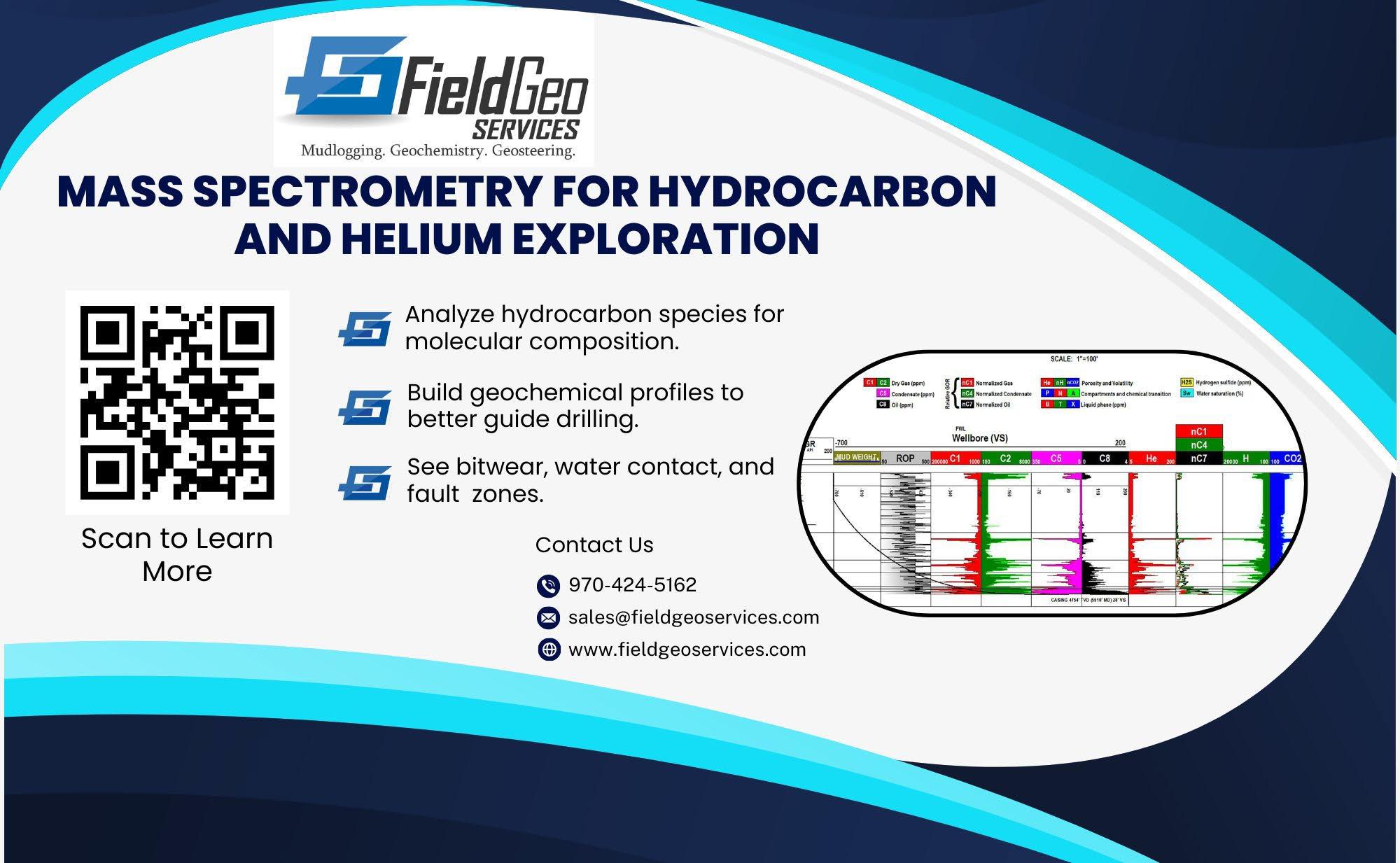

9: 00 AM
Presenting Author
Co - Authors
Thursday, April 10, 2025
Soil Gas in Modern Resource Exploration Room B
Gary Rice , GeoFrontiers Corporation
Dalton Balentine , GeoFrontiers Corporation
Abstract Most modern soil gas is collected using specialized augers or probes to separate soil gas from soil in - situ. Soil gas has been used for exploration since at least the 1970’s. Environmental contaminant detection and monitoring also are an extensive use of soil gas that may have started a little later.
In exploration, gases measured near the surface are useful for determining underground deposits only if these gases can migrate to the surface from reservoir depths. A buoyancy - driven vertical migration mechanism explains this process for all gases and fo r most liquids.
In exploration, soil gas samples are usually collected in grid patterns which offer a chance of mapping an outline of the originating reservoir. After sample analysis, data are combined with sample coordinates and the resulting grid is contour mapped. Examples of hydrocarbons, helium, and hydrogen illustrate soil gas exploration in action.
Soil gas methods exploring for hydrocarbons are used all over the world. While once a rare event, soil gas sampling for hydrocarbons has become common. Examples from the Eastern Shelf of the Midland Basin illustrate this point.
Helium is in short supply and, as a result, extremely expensive. Helium soil gas measurement was part of the USGS National Uranium Resource Evaluation (NURE) program from 1973 to 1984. In that program, helium was used as an indirect indicator of uranium which was the NURE program exploration objective. In addition, a helium soil gas survey over Harley Dome field in eastern Utah published by the USGS in 1981 illustrated that soil gas sampling with helium analysis could successfully image a known helium fie ld. USGS soil gas sampling probes developed for the NURE program are predecessors to current soil gas probes used for hydrocarbons. Ironically, soil gas probes developed for hydrocarbons are now being used to explore for helium.
Hydrogen exploration is gathering increased attention because hydrogen has promise as an additional energy source. Hydrogen can be used to generate heat, electricity, or locomotion using existing technologies. Currently we have only hydrogen synthesized from methane or water which requires more energy input than the energy the produced hydrogen can output. While synthesized hydrogen provides energy storage, geologic hydrogen, also called white or gold hydrogen, is an energy source.
Hydrocarbons, helium, and hydrogen can be analyzed in soil gas. In fact, all three types of exploration can be carried out on a single soil gas sample. Anything in soil and in the gas phase can be sampled and measured. The future for soil gas exploration is strong and includes a major role in meeting future resource needs.

Biography of Presenting
Author

Ph.D. Chemistry Oklahoma State University 1972
Active in helium exploration since 2012 and hydrogen exploration since 2022. Specialist in soil gas sampling, sample analysis, data displays, and data interpretation.


10:30 AM
Presenting
Thursday, April 10, 2025
Understanding the Subsurface Helium System in Manitoba and Evaluating the Potential for Economic Concentrations by Analyzing Entrained Volatiles in Legacy Cuttings
Author Christopher Smith , Advanced Hydro carbon Stratigraphy (AHS)
Room A
Co - Authors Michelle Nicholas , Manitoba Geological Survey , Timothy Smith , Advanced Hydrocarbon Stratigraphy (AHS), Patrick Gordon, Advanced Hydrocarbon Stratigraphy (AHS), Michael Smith , Advanced Hydrocarbon Stratigraphy (AHS)
Abstract Manitoba, especially in the southwestern portion of the province, has many of the same subsurface features that are present in the successful helium plays and areas with high helium gas tests in Saskatchewan. However, there are a lack of gas tests for helium in this part of the province to help understand if a meaningful helium resource might be present and to drive further investigation. This is not to say that there are no data, there are existing helium tests that suggest an exploitable resource may be present and there has been extensive investigation of the subsurface to help facilitate economic activities including oil and gas exploration and development. Utilizing Advanced Hydrocarbon Stratigraphy’s (AHS) Rock Volatiles Stratigraphy (RVS) technology, the Manitoba Geological Survey in partnership with AHS has examined cuttings from four wells covering the Precambrian to the Mississippian, three terminating in the Lodgepole Formation and one terminating in the deeper Devonian Dawson Bay Formation. Covera ge of these deeper formation is crucial in terms of trying to evaluate the potential for a subsurface helium system in Manitoba as the Cambrian Deadwood Formation in Saskatchewan is an existing target for helium production and is thought to possibly source its helium from the immediately adjacent Precambrian basement. Geographically the four wells are spaced to provide coverage of features like the presence of the Deadwood Formation, the Devonian Prairie Evaporite, among other subsurface features such as po tential faulting which may be important as migration conduits for helium.
While core offers many advantages and there are some existing RVS methods for interpreting helium data from cores to identify potentially economic concentrations, cuttings provide a much greater opportunity for stratigraphic coverage. Assessing this broad stratigraphic section in relation to these geographically distinct features has provided some key insights; in many cases significant helium responses are observed in the Ordovician Red River Formation before undergoing a baseline shift to lower values in the top of the Ordovician to Silurian – in addition to providing significant insights into other portions of the subsurface that serve as significant controls on the subsurface helium system. Using core has the benefit of being directly applied to assessin g potentially economic concentrations of helium, unfortunately this cannot be done with cuttings, however if it is assumed that cuttings would retain less helium than core samples, there is good evidence of potentially economic concentrations of

helium being present if the appropriate rock properties are also present. The RVS helium data also show meaningful relationships to the presence of the subsurface features covered in the geographical selections of wells providing additional insights into t he controls on the subsurface helium system. These data, and potentially from additional wells, will be discussed and demonstrate that 1) there does appear to be an active subsurface helium system in the southwestern section of Manitoba, 2) it is possible to appreciate where helium is most abundant and what stratigraphic and geographic features serve as controls on the system, and 3) some of these RVS helium data are promising in terms of potentially economic concentrations of helium in the province.
Biography of Presenting
Author

Christopher Smith has been a Senior Chemist with Advanced Hydrocarbon Stratigraphy (AHS) since January 2019 and moved to Midland in 2022 working on data analysis, instrumentation, client engagements, and business development. Most of his analysis work focuses on the Permian, the Anadarko and Arkoma basins in Oklahoma, the North Slope in Alaska, and the Marcellus. Since 2020 a significant portion of Christopher’s work has been geared toward expanding the uses of AHS’s unique patented technologies into non -t raditional fields for AHS beyond oil and gas – these include successful engagements and projects with academia, government, and operators on subsurface studies in carbon capture and sequestration, helium exploration, and geothermal power. Additionally, he has pushed AHS to be involved in scientific studies on permafrost in the Artic and the paleo environment before, during, and after the Chicxulub impact. Prior to working for AHS, he received his PhD in analytical chemistry from the University of Arizona wi th focuses on instrumentation, data analysis programing, spectroscopy, electrophysiology, surfactants, and surface modification chemistries. He also completed a MA in history at the University of Tulsa as a Henneke Research Fellow in 2012. He completed his undergraduate work cum laude in 2011 with degrees in chemistry, history, and biochemistry also from the University of Tulsa.
Thursday, April 10, 2025
11:00 AM
Presenting
Report 120 : the Alberta Energy Regulator & Alberta Geologic Survey 2021 - 2023 Aeromag Data Acquisition: Implications for Helium Exploration Room A
Author Duncan MacKenzie, Global Helium Corp.
Abstract The geologic hydrogen source component is divided into three sub - components comprising serpentinization - type water reduction sources (SP), radiolysis of water sources (RD), and deep mantle sources (DP). Layers within the SP subcomponent include: 1) an area defined by a magnetic anomaly in the offshore, eastern United States, 2) onshore areas where ultramafic rocks are present at the surface, and are inferred to extend into the subsurface, and 3) deep subsurface areas that have high - amplitude, positive grav ity anomalies. Layers within the RD

sub - component include 1) areas with known uranium deposits, 2) areas that are favorable for the concentration of uranium, 3) areas underlain by the Precambrian cratonic platform, and 4) areas that are underlain by accreted terranes and contain Phanerozoic - age, granitic rocks at the surface. Layers within the DP subcomponent include 1) areas of mapped, km - depth scale surface faults, 2) areas of Paleoproterozoic - age suture zones, and 3) areas of modeled, deep crustal boundaries interpreted from geophysical d ata. Finally, migration pathways were applied to specific source component layers. Regional - scale hydrogen migration pathways are derived from the basement topography, and consumption of hydrogen during migration is accounted for by diminished prospectivit y with increased migration distance.
Biography of Presenting
Author

Duncan MacKenzie is Vice - President Exploration at Global Helium Corp. He has spent 25 years working in oil & gas exploration and development, mining reagents, and since 2015 non - combustible gases. Duncan is cofounder of Global Helium, which has seen growth from an LLC to a company with an Alberta land base and successfully drilled and flow tested Paleozoic helium wells near the City of Medicine Hat. Global Helium also holds working interests in helium - prospective land in Saskatchewan and Montana.
Duncan’s oil & gas career has been spent growing production and reserves with Calgary - based oil and gas producers such as Zargon Oil & Gas Ltd., and Montane Resources. He has also worked as a consultant on oil and gas projects in Colombia and the Gulf of Guinea. During oil & gas downturns and while working to fund Global Helium, Duncan worked supplying mining reagents from North Africa and West Asia to non - ferrous metals and chemical producers in North and South America. Duncan studied geology at McGill University, Montreal, and the University of Alberta, Edmonton, and obtained his BSc Specialization Geology from the University of Alberta in 2002. He is a professional member of the Association of Professional Engineers and Geoscientists of Alberta (member nu mber 69004), and the Ordre des géologues du Québec (member number 1817).
Thursday, April 10, 2025
11:30 AM
Presenting
Exploring for Helium + Hydrocarbons in Western Alberta - the HeHC Strategy Room A
Author Brad Hayes , Petrel Robertson Consulting Ltd.
Co - Authors Howard Anderson, Alpha Helium Inc. , David Robinson, Alpha Helium Inc.
Abstract Helium has been a hot exploration target in the Western Canada Sedimentary Basin for the past ten years, as surging markets inspired explorers to build on scattered 1950s legacy pools as exploration models. Junior companies prospect for basement highs draped by highly - variable reservoirs developed in the basal regolith, or look for structural closures in thin overlying Devonian dolomites. Both

targets lie below oil and gas source rocks, and so are filled largely with nitrogen and up to 2% helium.
In capital markets of the early 2020s, these “green” helium prospects were promoted as environmentally - friendly investments that would not generate greenhouse gas emissions. While one company (North American Helium) has had considerable success in developing new helium reserves with this model, it remains difficult for smaller helium start - ups to attract new investment for similar plays in southern Alberta and Saskatchewan. Their prospects are seen by many investors to lack substantial upside, and they are also put off by uncertain pricing and lack of market transparency for helium.
Breaking away from the “green” helium paradigm, at least two helium explorers are strategically combining the strengths of decades of hydrocarbon exploration and production in the most gas - prone part of western Alberta, and expertise in identifying superio r helium concentrations. Weak North American natural gas prices and the dominance of big unconventional plays like the Montney and Duvernay have steered most operators away from historical conventional plays. But many of the deeper plays feature helium concentrations comparable to the “green” helium fairway, promising robust economics generated by producing three commodities – natural gas, natural gas liquids, and helium.
We call this new exploration model the HeHC strategy. We’ll assess the progress of the two HeHC players in western Alberta – Alpha Helium and First Helium – to demonstrate two different approaches to HeHC plays.
Biography of Presenting
Author
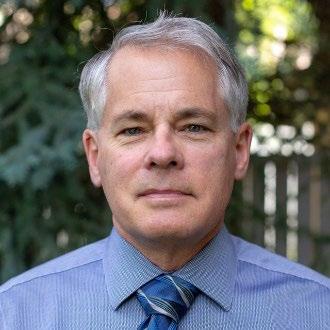
10:30 AM
Presenting
Brad Hayes is President of Petrel Robertson Consulting Ltd., a geoscience and engineering consulting firm advising clients working in oil and gas, helium and lithium exploration, carbon capture and storage, geothermal energy and water resource management. Brad and PRCL have provided technical support for many helium exploration companies in western Canada over the past eight years.
Thursday, April 10, 2025
Potential for Hydrogen & Helium Storage in Salt Caverns in North America
Author Matthew Bauer, Agapito Associates, Inc.
Co - Authors Brandon Lampe, Agapito Associates, Inc.
Room B
Abstract This study investigates the potential for hydrogen and helium storage salt cavern across North America. This is a response to the growing demand for these gases amid ongoing developments in helium, geologic hydrogen, and generated hydrogen sources. Salt cavern storage allows for leveraging market fluctuations while ensuring reliable domestic supplies. Unlike hydrocarbons, helium and hydrogen production may exhibit different spatial demands compared to

previously constructed salt cavern storage which creates opportunities for developing new storage facilities.
To assess the viability of locations salt storage projects, we employed Play Fairway Analysis (PFA) to analyze onshore bedded and diapiric salt deposits. The play fairway analysis evaluation was conducted in three phases: technical suitability, market suitability, and transportation suitability. Technical suitability considered factors such as the depth of the salt formation, thickness, and degree of interbeds. Market suitability was evaluated based on proximity to potential sources and demand. Potential geologic sources were based on the inverse distance weight of public gas analysis databases. Potential and existing sources of generated hydrogen from renewable, coal, natural gas, nuclear, and hydro power. Transportation suitability was evaluated based on p roximity to existing infrastructure, including purpose - built pipelines, railroads, and interstate highways.
Biography of Presenting Author

With over two decades of expertise in quantitative geoscience, Mr. Bauer works with clients maximizing the utility of their data to provide business insights and drive innovation. Throughout his career, he has led a multitude of projects, ranging from the application of spatial data science in solution mined caverns and injection wells, the evaluation of energy project economics, to the spatial monitoring of land records and commodity prices. His diverse portfolio also includes exploration of resources such as hydrogen, helium, and petroleum. Notably, Mr. Bauer designed and implemented the ETL (Extract, Transform, Load) and spatial analytics process for a renewable energy fund boasting $75 million in assets under management (AUM). Additionally, he served as the technical lead for management of a mineral portfolio spanning over 16,000 net mineral acres.
A passionate advocate for knowledge dissemination and mentorship, Mr. Bauer actively contributes to initiatives aimed at promoting the geosciences and fostering data literacy within the field. As an Affiliate Faculty member of the Department of Geology and Geologic Engineering at Colorado School of Mines, he plays a role in shaping the next generation of geoscientists. Additionally, Mr. Bauer’s serves on the Board of Directors as the President Elect of the Rocky Mountain Association of Geologists (RMAG) underscores his commitment to advancing the profession.
Mr. Bauer’s dedication to education extends beyond traditional academia; he regularly conducts short courses on Python and ETL for geologists through organizations such as RMAG, the American Association of Petroleum Geologists (AAPG), and the Geological Society of America (GSA). Mr. Bauer is a licensed professional geologist in both Kansas and Louisiana.



11:00 AM
Presenting
Thursday, April 10, 2025
Working Gas Cycling and Produced Water Impacts Hydrogen Reservoir Performance in Temporary Geologic Storage Room B
Author Donna Willette, Illinois State Geological Survey
Co
- Authors Richard B. Dessenberger , Illinois State Geological Survey
Abstract Assessments of temporary geologic storage of hydrogen requires both subsurface fluid and rock characterization, injection/withdrawal designs, and dynamic modeling which support surface utilization. Integration of subsurface conditions, research results, and rock characterization is required for constructive dynamic simulations. A screening scenario was developed to approximate a real - world geologic hydrogen storage facility of long duration (180 days / 6 months) cycling with reasonable constraints on the working gas, cushion gas volumes, and tubing head pressure to enable a potentially viable surface facility design. This research involved a screening scenario to evaluate 1) working gas performance under one injection/withdrawal cycle per day for up to 180 days, 2) cushion gas influence on water production, 3) hysteresis response to cycling, and 4) three dimensional dispersion of the hydrogen bubble in the reservoir Criteria was based upon 2.8MMSCF (79,287.2m3) working gas, 24 - 42 MMSCF (703,523.1 - 1,231,16 5m3) cushion gas of hydrogen, and using a requirement of a minimum tubing head pressure (THP) of 770.7psia (53.14 bar).
A geo - model was built to replicate the actual stratigraphy of a heterogeneous sandstone reservoir. The total thickness of the potential reservoir interval is approximately 100 ft (30.55 m) with numerous interbedded shale intervals. The geo - model was used as the basis for dynamic simulations of hydrogen injection into the lowermost sandstone interval capped by a thin 12 ft (3.66 m) shale horizon. Modeling inputs include laterally isotropic permeability (Kx=Ky), vertically anisotropic permeability (Kz=0.45Kx), an injection pressure constraint (Pmax = 0.9*0.70 psi/ft (0.00483 Mpa/ft)), and infinite acting aquifer boundary conditions.
It was determined that a lateral perforation injection design preserved the gas bubble to a greater extent than typical vertical well perforations. With the addition of capillary pressure and relative permeability into the simulation, vertical dispersion of hydrogen is restricted by the thin shale horizon which caps the injection interval over the duration of 180 daily cycles. Given a cushion gas volume of 42MMSCF, the lateral dispersion of hydrogen only nominally increases by 150 ft (45.7m) between 90 and 180 days. Experimental results and modeling simulations indicate that hysteresis will occur because of residual trapping in the reservoir pore fabric with initial injection of hydrogen. Initial losses may range from 5 - 15% but with continued cycling, incremental recovery of a portion of the cushion gas may occur. Simulation results indicate that with each injection/withdrawal cycle a nominal to significant amount of brine will be coproduced with the hydrogen depending upon cushion gas volume and perforatio n design. Screening simulations are vital to develop research avenues which may

answer critical questions regarding hydrogen storage in brine aquifers. However, simulations require a strong grounding in rock and fluid physics, subsurface characterization, and realistic injection scenarios.
Biography of Presenting
Author

After receiving a B.S. and M.S. in Geology at Colorado State University (CSU), Donna Caraway Willette worked for both independent and multinational petroleum companies as an operations geologist, development geologist, and new venture explorationist. She received her doctorate in petroleum geochemistry from Colorado School of Mines and taught various courses for CSU as needed for profess ors on sabbatical. Hired by the Illinois State Geological Survey in 2015, initially her research work involved geochemical maturity indicators, marker correlations for various source intervals, and basin modeling using both temperature and saturate/aromati c/diamondoid parameters. Currently, she is a principal investigator and research scientist for hydrogen storage reservoir performance working with industry and national lab partners. She is also Principal Investigator for the Reducing Methane Emissions from Marginal Conventional Wells DOE Program (MERP) involving the Illinois State Geological Survey response in assisting operators with plugging/mitigation efforts
Thursday, April 10, 2025
11:30 AM
Presenting
Evaluation of Potential Geochemical and Microbial Challenges Associated with Hydrogen Storage in Porous Media
Author Joao Gallotti , U.S. Geological Survey
Room B
Co - Authors Sean T. Brennan, U.S. Geological Survey, Ashton M. Wiens U.S. Geological Survey, Marc L. Buursink , U.S. Geological Survey
Abstract Hydrogen (H2) is emerging as a crucial energy carrier for achieving large - scale decarbonization in the energy sector. Power - to - gas technology utilizes surplus electricity to split water into H2 and O2 via electrolysis. When this technology is integrated wi th renewable energy sources such as solar and wind, the H2 produced is referred to as “green H2” because its production generates zero carbon dioxide emissions. The produced H2 can then be stored for future energy needs, with subsurface reservoirs potentially providing more substantial storage capacity than surface storage methods. While salt caverns have demonstrated effectiveness in storing pure H2 in regions such as the United States, United Kingdom, and Germany, their limited geographical distribution underscores the need for alternative storage solutions. Porous sedimentary formations, such as sandstone strata, may offer broader accessibility for geologic H2 storage. Saline aquifers and depleted gas reservoirs are especially suited for gas storage. Howe ver, a critical concern arises from the potential transformation of H2 within these porous formations due to microbial and geochemical reactions, which could compromise the efficacy of such formations as storage media. An

understanding of these interactions particularly the solubility of H2 in water and its interactions with microbes and minerals is essential for advancing safe underground H2 storage technologies. This presentation aims to address the geochemical and microbial challenges associated with H2 storage in porous sedimentary formations. We outline potential challenges associated with site selection and the effective implementation of H2 storage solutions.
Biography of Presenting Author
Joao S. Gallotti is a physical scientist at the U.S. Geological Survey (USGS) Geology, Energy & Minerals Science Center in Reston, VA, specializing in geological energy storage with a focus on hydrogen storage in porous media. His research employs advanced modeling techniques to investigate geochemical and microbial - induced reactions associated with hydrogen storage in subsurface environments. Joao holds a bachelor's degree in petroleum and natural gas engineering from Monte Serrat University, a master's degree in geological sciences from Shippensburg University, and is currently pursuing a doctorate degree in environmental science and public policy at George Mason University. His work contributes to the development of methodologies for assessing geologic en ergy storage potential, addressing critical knowledge gaps in the emerging field of large - scale underground hydrogen storage.
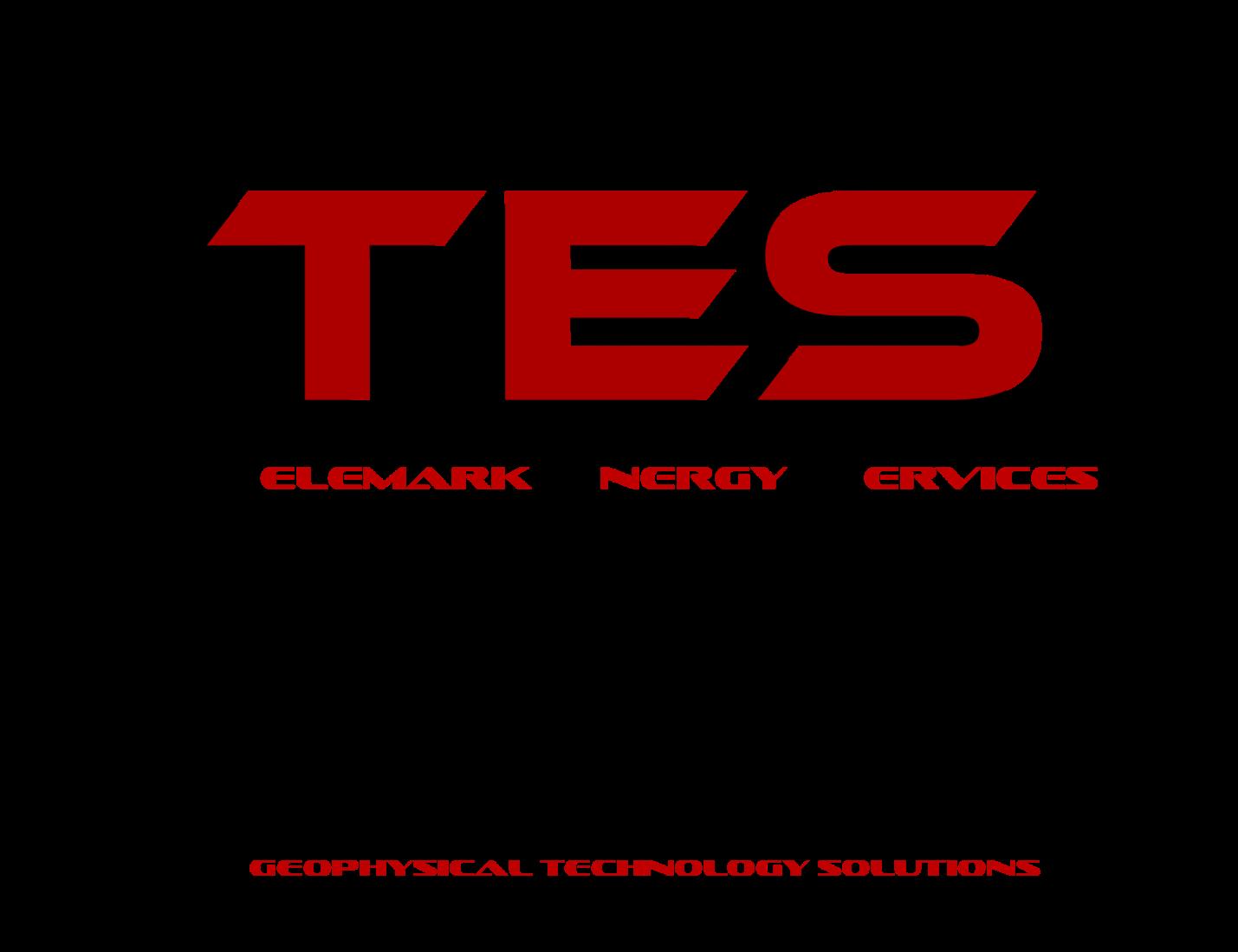

12:30 PM
Presenting
Thursday, April 10, 2025
Helium Project Development Hurdles: Midstream & Markets
Author Jeremy Jordan, Jordan Development
Room A
Abstract From concept to commercialization, getting new helium supplies to market can be an arduous journey. Similar to developing a hydrocarbon prospect, substantial geologic, geophysical, land, and permitting efforts are poured into making a project drillbit rea dy It isn’t unusual for years to go by between the time a concept is hatched and a rig appears on a well pad. Unfortunately, the discovery of a helium - bearing field typically doesn’t mark the end of the road. Often the midstream and downstream elements of a project entail additional levels of work – and time – that can be surprising to some developers.
There isn’t a “one size fits all” processing scheme for helium extraction and purification. Helium can be entrained in gas streams with diverse compositions, ranging from hydrocarbon - laden to totally inert. The makeup of a raw gas stream, along with other reservoir characteristics (e.g. wellhead pressure, deliverability, size, etc.), project location, ultimate development plans, availability of ca pital, and overall risk tolerance all play a role in the selection of the helium separation technology itself, as well as other midstream components of a project, such as gathering system design, and other gas processing and treating needs (e.g. NGL recove ry, CO2 removal). Permitting requirements and timelines can vary by state, potentially further influencing technical decisions.
Helium offtake strategy plays a critical role in infrastructure planning. Since the most recent RMAG helium conference in 2023, the helium market has swung from one of general tightness to one of oversupply (at least as of the time of this publishing in N ovember 2024). While helium is not a unique commodity in the sense that it is not impervious to market gyrations, helium pricing in North America has generally trended upward over the past decade. Given the relatively nascent nature of the North American upstream helium industry, the current pricing environment (a buyer’s market as opposed to a seller’s market) is unfamiliar territory for many helium developers.
Drawing on experience derived from over 17 years of developing projects with IACX Energy, the speaker will cover the interrelated topics referenced above, with a particular emphasis on helium separation technologies, overall project - related midstream challenges, and the impact of downstream marketing on helium project development.
Jeremy Jordan has 25 years of combined experience in the energy and investment banking industries. Prior to forming Jordan Development Solutions in January 2025, Mr. Jordan was a co - founder of IACX, where he predominantly focused on the company’s commercial efforts. Some of his strengths include: identification, structuring, and negotiation of greenfield projects and asset acquisitions; product marketing, including residue gas, NGLs, and helium; gas supply; and overall development of complex, helium - centric natural gas projects. Prior to


1:30 PM
Presenting
starting IACX, he worked as an advisor to private and public companies seeking institutional financing. Mr. Jordan holds a Bachelor of Business Administration with a concentration in Finance from Southern Methodist University
Thursday, April 10, 2025
Helium Production from Devonian Beaverhill Lake at the Knappen Field, SE Alberta Room A
Author Henry Williams, Thor Resources Inc.
Co - Authors Brent Jonah, Thor Resources Inc., Derek McCoubrey, Thor Resources Inc. Nathan Pearson, Thor Resources Inc.
Abstract Reservoirs in the Givetian - Frasnian Beaverhill Lake Group and Cambrian Flathead Formation (Cambrian Basal Sand) at Thor’s Knappen Field in SE Alberta have been on production since 2019. Gas composition at both stratigraphic levels is dominantly N2 (~89%) with lesser amounts of CO2 (6%) and methane (3%); He values average 1.5%.
The Beaverhill Lake lithologies have more in common with those of the equivalent Souris River Formation of the Williston Basin (Lane, 1964) than those elsewhere in Alberta (Oldale & Munday, 1994; Wendte & Uyeno, 2005; Hauck, 2014), reservoirs comprising a series of dolomudstones and dolopackstones separated by anhydrites that suggest deposition in an arid marginal marine or lagoonal (salina) setting. Similar He - N2 Beaverhill Lake reserves have been recognized elsewhere in SE Alberta near Medicine Hat (Weil Group and Global Helium) and Steveville (Royal Helium), plus in northern Montana including Rudyard (Helix Exploration) and Whitlash (Avanti Helium). Thor Resources also has a second, undeveloped Beaverhill Lake discovery at Sapphire to the east of Knappe n.
Petrographic study of the Beaverhill Lake reservoirs suggests that the original lithologies were dominated by tight pelletal lime mudstones (or grainstones) which were altered by dolomitization into porous lithologies with moderate to high porosity and permeabiity (typical core values of 10 - 20% and 1 - 60mD).
Permeability has been enhanced through pressure solution and brecciation in several of the lower layers, possibly related to local salt dissolution or syndepositional karsting. Porous dolomites are sealed from each other by anhydrites, leading to a series of stacked reservoirs each with its own gas - water contact within a four - way anticlinal closure.
Reservoir intervals in both the producing and non - producing Beaverhill Lake levels, and in similar lithologies belonging to the overlying Cooking Lake Formation, vary in fluid composition. The Knappen producing intervals are

dominated by N2 but immediately overlying the uppermost producing level, and separated only by a ~2m thick anhydrite, porous dolomites are dominated by CO2 (~80%) with about 1% methane. Upper Beaverhill Lake and Cooking Lake fluids, known also from several other SE Alberta locations, can include minor gases but are generally dominated by both saline and almost fresh water. These observations suggest a complex history of multiple fluid migration events, possibly beginning with an initial hydrocarbon phase based on local oil staining and low HC gas concentrations. This would have been subsequently flushed by high He - bearing N2 basement - derived gases (eg. Cheng et al 2023) and by CO2 possibly during or after emplacement of the Eocene Sweet Grass laccoliths and associated intrusions in northern Montana (Adeniyi et al 2003). Local fresh water may be related to post - intrusion meteoric recharge from the Sweet Grass Hills, as has been documented for the Cretaceous sands of the area (Hendry et al, 1991; Pétré et al, 2016, 2019). These fluid variations lead not only to ambiguities in petrophysical interpretation but also to completion and production issues due to reservoir cross - flow and degradation of annular cement, casing and tubulars though exposure to CO2 acidified reservoir waters. A somewhat similar case of contrasting high N2 with high helium vs high CO2 low helium reservoirs was recorded from a single well in New Mexico by Broadhead (2024), who interpreted the CO2 to represent late stage magmatic - derived flushing via carrier beds.
Additional study demonstrating the relationship of high N2/He discoveries and proximity to faults and intrusions in the US Four Corners area has been discussed by Halford et al (2024).
Adeniyi et al 2023, Origin of CO2 in Upper Devonian Duperow Formation and the Bakken petroleum system at Kevin Dome. Chemical Geology 639, 2 - 13.
Broadhead, R.F. 2024, Helium – Relationships to other reservoir gases and some implications for exploration: the New Mexico example. Geoconvention 2024 Abstracts, Calgary, Alberta.
Cheng, A., Sherwood Lollar B., Gluyas, J. & Ballentine, C.J. 2023, Primary N2 - He gas field formation in intracratonic sedimentary basins. Nature 615, 94 – 99.
Halford, D.T et al 2024, Probabilistic determination of the role of faults and intrusions in helium ‐ rich gas fields formation, Geochemistry, Geophysics, Geosystems 25, e2024GC011522, 14p.
Hauck, T.E. 2014, Regional correlation of the Beaverhill Lake Group in the subsurface of Alberta, townships 29 to 113 and ranges 1W4 to 13W6; Alberta Energy Regulator, AER/AGS Open File Report 2014 - 05, 29 p.
Hendry, J., Schwartz, F.W & Robertson, C. 1991, Hydrogeology and hydrochemistry of the Milk River aquifer system, Alberta, Canada: a review. Applied Geochemistry 6, 369 - 80.
Lane, D.M. 1964, Souris River Formation in southern Saskatchewan. Saskatchewan Department of Natural Resources, Geological Sciences Branch, Sedimentary Geology Division, Report 92, 1 - 60.
Oldale, R.S. & Munday, R.J. 1994, Devonian Beaverhill Lake Group of the Western Canada Sedimentary Basin; In G.D. Mossop, G.D & Shetsen, I. (compilers), Canadian Geological Atlas of the Western Canada Sedimentary Basin. Society of Petroleum Geologists and Alberta Research Coun cil, 149 – 163.

Pétré, M - A., Rivera, A., Lefebrvre, R, Hendry, M & Folnagy, A., 2016, A unified hydrogeological conceptual model of the Milk River transboundary aquifer, traversing Alberta (Canada) and Montana USA). Hydrogeology Journal 24, 18471871.
Pétré, M - A., Rivera, A. & Lefebvre, R., 2019, Numerical modeling of a regional groundwaterflow system to assess groundwater storage loss, capture and sustainable exploitation of the transboundary Milk River Aquifer (Canada – USA). Journal of Hydrology 575 , 656 - 670.
Wendte, J. & Uyeno, T. 2005, Sequence stratigraphy and evolution of Middle to Upper Devonian Beaverhill Lake strata, south - central Alberta. Bulletin of Canadian Petroleum Geology 53, 250 - 354.
Biography of Presenting
Author
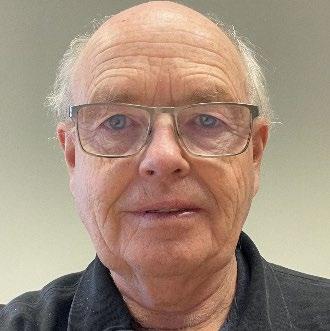
Following graduation from the University of Birmingham (B.Sc) and Glasgow (Ph.D.) in the UK, Henry Williams spent three years as postdoctoral fellow at the University of Oslo and Memorial University of Newfoundland before being appointed as Professor at MUN. In 2000, he made a career move to Petro - Canada in Calgary where he spent nine years as exploration and development geologist in central Alberta before moving to Libya for two years following a merger with Suncor. After his return to Calgary, he was involved in Suncor’s Atlantic Basins team and offshore East Coast Canada exploration and developmen t before becoming involved with CCS evaluation and joint CCS Hub license proposals in central Alberta. Henry joined Thor Resources as VP Geoscience in 2023, where he is responsible for the exploration and development of Thor’s lands in Alberta and Montana. He is also CCS Advisor for OptiSeis Solutions Ltd., a seismic acquisition design, processing and interpretation company in Calgary.
Thursday, April 10, 2025
1:30 PM
Presenting
Benefits of Pressure Swing A b sorption for Helium Separation Room B
Author Alex Judge , IACX
Abstract Pressure swing adsorption is a technology with multiple applications in the oil & gas and industrial chemicals manufacturing industries. Helium capture and purification is no exception to this rule with many benefits to support a successful project. The primary benefits are high recoveries and high final product purity. Routine empirical data at IACX has shown long - term averages greater than 90% recovery on helium from plant inlet to product storage. Additionally, +98% average product purities are routinely obtained from one PSA stage (with +99.99% purities achievable with the addition of a secondary stage). Additional advantages include: adsorption material durability (ability to handle

process upsets and require infrequent media changes), high concentration gross up from feed to product and ease of integration with other processes. Furthermore, PSA plants are modular in nature and operating in as little as 30 days from equipment delivery. These secondary advantages have the benefit of lowering upfront capital investment along with relatively low ongoing cost. Feed gas composition presents its own mix of challenges depending on the relative compositions of other components to helium. These considerations can require additional equipment to meet throughput, recovery and purity targets.
Biography of Presenting
Author
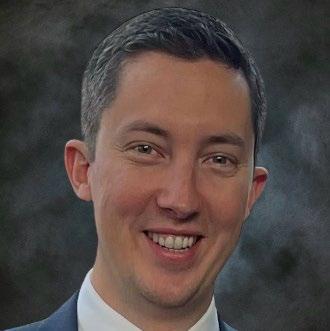
Alex Judge is the Engineering and Midcon Region Manager for IACX Energy. His role and experience specialize in nitrogen rejection and helium recovery projects. Alex has over 12 years experience working on design and operation of IACX's proprietary Pressure Swing Adsorption equipment. He has a Bachelor of Science in Chemical Engineering from Syracuse University. Alex has an interest in understanding and closing the gap between project design and operational challenges.
Thursday, April 10, 2025
2:00 PM
Presenting
Modular Hydrogen Purifiers Room B
Author Kirsten O'Sullivan, Air Liquide , & Paul Terrien Air Liquide
Abstract Most hydrogen produced today is done by steam methane reforming, in which hydrogen is created by chemical reaction. However, there are many resources in which hydrogen is naturally present, but the production of this hydrogen has not been done yet in any significant fashion because of the cost associated with purification and the low emphasis on decarbonized hydrogen up until recently.
The type of hydrogen rich natural resources considered for the purpose of discussion here are rather small volumes but associated with largely carbon free gas (for instance nitrogen rich fields with small volumes of hydrogen). Recent discoveries in North America, Europe and Australia of this type of gas have been recently publicized.
The purpose of this presentation is to present a simple and innovative process to tackle these hydrogen rich resources. This process is based only on plug and play, modularized skids using two key technologies: Membrane Separation and Pressure Swing Adsorp tion (PSA).
Hollow fiber membrane technology is uniquely suited for such a requirement as it shows extremely high hydrogen selectivity, enabling very high hydrogen enrichment factors. Additionally this technology is more compact than most allowing for the systems to be built as small plug and play skids. For this reason, Air Liquide’s hollow fiber membrane technology has been widely used throughout the world for hydrogen purification for many years with more than 200 plants running with this technology in the world.

The combined membrane and PSA approach has been very successfully employed at small scale in the application of helium purification in recent years, with numerous plants in production and in construction. Relevant field data and learnings will be discussed, and specifically how this can be capitalized on for hydrogen applications. New and improved membrane technologies will also be introduced.
The concept will be illustrated through a case study of a typical hydrogen rich gas to show the benefit and simplicity of the approach compared to more traditional approaches such as cryogenics.
Biography of Presenting
Author


Kirsten O’Sullivan is currently the Senior Manager of Hydrogen and Helium Membrane Business Units at Air Liquide Advanced Technology US. She has been working for Air Liquide for the last 6 years, previously as a process engineer in the same business unit. She has been an Air Liquide Local Expert for the past 2 years.
Paul Terrien is currently the senior director of solutions development and commercial business units at Air Liquide Advanced Technology US. He has been working for Air Liquide for the last 17 years. He started out as a process engineer and since then he has held various technical and commercial positions in France and in the US covering various technologies including carbon capture, hydrogen production, natural gas conditioning and helium purification. For the past 6 years, his focus has been mainly gas separation membranes for natural gas, helium, hydrogen purific ation and renewable natural gas. Paul is an Air Liquide Senior International Expert, he has presented at around 10 technical conferences and has more than 20 patents.
Thursday, April 10, 2025
2:30 PM
Presenting
Author
Helium Recovery from U.S. Shale Gas: New Opportunities for the LNG Sector
Room A
Tongwei Zhang, Bureau of Economic Geology, The University of Texas at Austin
Co - Authors Ning Lin , Bureau of Economic Geology, The University of Texas at Austin , Saad Saleh , Bureau of Economic Geology, The University of Texas at Austin , Mark Shuster , Bureau of Economic Geology, The University of Texas at Austin
Abstract The United States has historically been the dominant global player in helium production, with the Federal Helium Reserve supplying a significant share of global demand during much of the 20th century. However, this dominance is shrinking as countries like Qatar, Russia, and Algeria increase their production capacities. While the United States remains a significant helium producer, its

demand is expected to grow steadily, driven by the expansion of semiconductor manufacturing supported by the U.S. CHIPS Act. By the mid - 2030s, this demand growth could outpace domestic supply, necessitating the development of new helium sources to meet industrial requirements. The most economical source of helium is natural gas, all of which contains some helium. Natural gas in the States of Texas, Kansas, Colorado, Utah, and Wyoming is richer in helium than what has been recovered from other States. Only a small number of gas fields contain the minimum concentration (>0.3 mol%) of helium necessary to make recovery commercially viable. Helium concentration in shale gas plays increases with the geologic age. The preliminary gas compositional data showed that helium concentration is from 0.0014 mol % to 0.0053 mol % in Cretaceous Eagle Ford Shale, 0.0018 mol % to 0.004 mol % in Jurassic Haynesville Shale, 0.028 mol % to 0.20 mol % in Permian Wolfcamp Formation, 0.019 mol % to 0.067 mol % in Mississippian Barne tt Shale, and 0.023 mol % to 0.30 mol % in Devonian Marcellus Shale. Concentrations of radiogenic 4He from uranium decay are produced in - situ over the age of the strata, and the external input from surrounding formations into the shale is possible. Uranium and TOC content of unconventional shale gas plays and geologic age are main variables to helium concentration in the produced shale gas.
Given the geopolitical risks and increasing competition in the global helium market, recovery of helium from LNG end - flash creates new opportunities and presents a promising opportunity to enhance domestic helium production by leveraging existing LNG infrastructure. By extracting helium from the LNG endflash, where helium appears in a concentrated form, natural gas with helium content down to 0.05 mol% can be considered for production of crude helium. For example, helium production plants in Qatar utilize a feed gas containing just 0.04 mol% He. In addition, an external refrigeration system is no longer required under the sufficiently low temperature liquefaction process for natural gas. Helium can be a value stream to the economics of LNG projects. Helium resource assessment of unconventional shale gas plays is basin specific. Detailed basinscale study is required by integrated geology, geochemistry and geophysical well logging. Geological resource assessment should be combined with pipeline sorting of gas feeding to LNG plants for economic evaluation of helium extraction from LNG - flush - end gas phase. An economic analysis of constructing and operating helium extraction integrated with LNG facilities can identify the breakeven helium concentration in natural gas stream to justify investments and assess the potential market impact to the U.S. and global balance. The new findings could bring innovative value creation that change the procurement strategies of U.S. LNG projects.
Biography of Presenting Author
Dr. Zhang is internationally - recognized Organic Geochemist, and his research mainly focuses on shale gas and oil storage mechanism, hydrocarbon geochemistry in unconventional reservoirs, thermochemical sulfate reduction (TSR) mechanism and kinetics, and gas isotopic geochemistry in sedimentary basins. Dr. Zhang is founder of Gas Geochemistry Laboratory at Bureau of Economic Geology, The University of Texas at Austin. He has made more than 100 publications, which have been highly cited by others. Six Top 1% highly cited articles in Geosciences, 7716 total citations (from Web of Science Core Collection), 10102 total citations (from Google Scholar citation). Dr. Zhang received Wallace E. Pratt Memorial Award, 2015 (Best original article published in

Program Book - Abstracts
the AAPG Bulletin in 2013), Hitchon Award, 2017 from International Association of Geochemistry (for the most highly - cited paper in Applied Geochemistry for 2012).
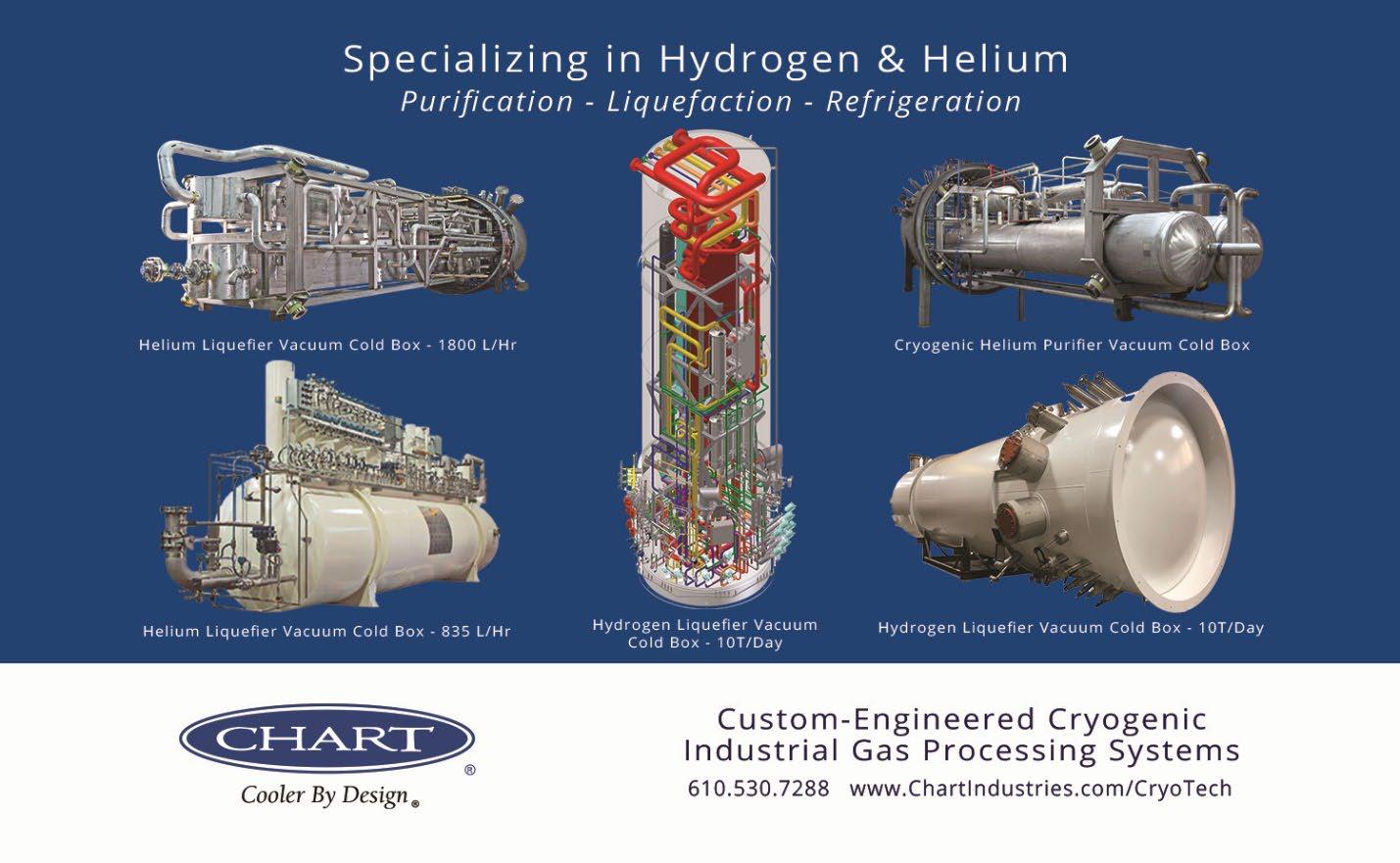

3:00 PM
Presenting
Thursday, April 10, 2025
CO2, What You Need to Know About this Molecule. Production, Distribution, Marketing and the Several Commerical Applications
Author Ric Wiesemann , CO 2 Coal ition
Abstract Co2 Recovery
- Low Pressure
- High Pressure
Co2 - Liquefaction
Co2 - Distribution
Co2marketing
Co2 Applications
Biography of Presenting
Author
Room A
2:3 0 PM
Ric Wiesmann has 40+ years experience within the U.S. commercial carbon dioxide industry as a successful entrepreneur. Rick started his career with his family’s dry ice business, Continental Carbonic Products Inc. and soon founded his own liquid carbon dioxide business, EPCO Carbon Dioxide Products, in Sterlington, LA in 1987 where he served as CEO and Chairman. Over the next 26 years, the company grew rapidly as 21 additional CO2 liquefaction plants were built within the Central United States. Over those years, he gained valuable expertise in identifying, selecting and commercializing suitable CO2 feedstock recovery plant projects that included the plant financing and construction phases. He succeeded by employing a flexible and hard driving management approach in operating EPCO’s production distribution, administrative and marketing departments. Following the successful sale of EPCO to a major international industrial gas company in 2013, Ric maintains an interest in promoting the valuable aspects of carbon dioxide to people through his membership in the CO2 Coalition.
Thursday, April 10, 2025
Fair Market Valuations of Helium and Hydrogen Exploration & Production Companies Room B
Presenting Author Jeff Aldrich, Sproule
Co - Authors Steve Golko, Sproule

Abstract The last several years have seen a remarkable growth in the number of start - up companies exploring for helium and now hydrogen as a commercial gas. While several of these new companies have raised capital from private equity sources most have tried to use the ability of public stock offerings to raise the initial capital to fund the initial exploration efforts. There are positives and negatives to the use of each different market, and we will look at the current state of capital raised, and deployed, from the TSX, London AIM, and ASX exchanges, the most popular markets for emerging hydrogen and helium exploration companies.
By evaluating both IPO’s, transaction histories, and current share prices we can track valuations and gauge the relative performance of helium - and hydrogenfocused companies across various exchanges.
Biography of Presenting Author

Jeffrey Aldrich is a Senior Geoscientist with Sproule International Company (formally MHA Petroleum Consultants). He has over 40 years of global oil and gas experience working from frontier exploration through appraisal to large development projects. His expertise is in unconventional reservoirs, prospect evaluation, reserve determinations, helium reservoirs and multidiscipline and multi - culture team dynamics. Jeff is the primary Petroskills instructor for “Evaluating and Developing Shale Reservoirs (SRE)” , “Prospect and Play Analysis (PPA)” and Unconventional Reserve and Resource Evaluations (URRE). Prior to joining MHA he held various management and technical positions with Dart Energy, a Australian global unconventional gas company, Greenpark Energy, a UK CBM company, PetroSA, the South African national oil company, and Amer ican companies, Forest Oil, Maxus Energy and Pennzoil Oil and Gas Company. He has a B.S. Degree in Geology from Vanderbilt University and a M.S. Degree in Geology from Texas A&M University. He is an active member in the AAPG having served as the Vice - Pre sident, Sections, President of the DEG and is currently the Chairman of the Board of Datapages, LLC. plus active on several committees. He is also a member of SPE, RMAG, DWLS, DIPS and is both Certified Petroleum Geologist (#3791) and a Licensed Profession al Geologist in Texas, Louisiana and Alberta. He is author or co - author of over 30 papers and/or technical presentations.
Thursday, April 10, 2025
3:00 PM 2024 Helium Markets and Trends Room B
Presenting
Author Robert Goodin , U.S. Geological Survey
Abstract This presentation will provide key insights into helium production, consumption, and market trends in 2024, drawing from the latest data in the U.S. Geological Survey (USGS) Mineral Commodity Summaries 2025 and Minerals Yearbook 2023. Topics will include U.S. helium production and usage, pricing trends, U.S. import and export trends, end - use consumption, global production, reserves and resources, and an overview of recent market developments and challenges.

Biography of Presenting
Author
Robert Goodin is a Mineral Commodity Specialist for the National Minerals Information Center at the United States Geological Survey. As a Mineral Commodity Specialist, he is currently tracking helium, hydrogen, noble gases, feldspar, high - purity quartz, in dustrial sand and gravel, industrial quartz crystal, and special silica commodities. During his time as a Mineral Commodity Specialist, he has authored multiple chapters for a variety of mineral commodities in the Minerals Yearbook and Mineral Commodity Su mmaries publications, published special reports, and produced data releases to allow for more accessible public data. Prior to working as a Mineral Commodity Specialist, he worked in the oil and gas industry as a Geoscientist for ExxonMobil. He has publica tions in multiple scientific journals in the fields of chemistry, geology, and geophysics. Robert graduated with an Honors Bachelor of Science degree in Geological Sciences from the University of Miami.


4:0 0 PM
Presenting Author
Co - Authors
Thursday , April 10, 2025
Geologic and strategic insights reveal the state of play in the natural hydrogen industry
Allegra Hosford Scheirer , Geo Modeling Solutions, LLC
Aaron Mattson, Mafic Consulting Group
Room B
Abstract The natural hydrogen community has grown significantly over the past couple of years, with a handful of established companies and over 60 startups currently exploring for this tiny molecule worldwide. In this talk, we present geologic and strategic insight s into the present and future state of this new subsurface energy resource. For example, most companies appear to be chasing natural hydrogen that was produced from the serpentinization of ultramafic rocks (primarily mantle peridotite). This explains the focus on the Midcontinental Rift in the United States and the foothills of the Pyrenees Mountains in France. Other companies, however, are pursuing hydrogen that was generated from the radiolysis of water. Example exploration regions are the cratons of Canada and Australia, where ancient rocks are rich in radioactive elements. Our global map will share our knowledge of where companies are exploring for hydrogen…and why. In so doing, we will demonstrate the utility of our custom AI tool for research and analy sis of natural hydrogen exploration.
Switching gears to the business side of the equation, we will discuss the numerous factors affecting investment in this space: what constitutes an economic accumulation of hydrogen? What is a suitable flow rate? Why are helium companies beginning to explore for hydrogen and vice versa? Where does the mining industry fit in? This section of the talk will feature our proprietary hydrogen lifting cost tool, which not only provides critical information to prospective investors, but also aids companies to minimize their cash burn rate. Finally, a custom prospect and uncertainty evaluation tool marries the geologic factors with the economic ones to help explorers maximize their chance of success.
Biography of Presenting Author

Allegra Hosford Scheirer is an interdisciplinary geoscientist specializing in natural hydrogen exploration, basin and petroleum system modeling, CCUS, and geothermal energy. With experience spanning government (USGS), academia (Stanford University), and in dustry, her work focuses on unraveling the fundamentals of rock - fluid interactions to optimize exploration activities and de - risk energy investments. After 16 years at Stanford, Allegra now works as a full - time consultant helping companies worldwide to unlock Earth resources for a secure energy future. She also designs and leads custom short courses and field trips, offering tailored training for industry professionals on hydrogen systems, petroleum geology, and carbon capture strategies. Allegra brings str ategic leadership to petroleum exploration in Alaska as an independent

Program Book - Abstracts
director at Pantheon Resources. Her geophysics degrees are from Brown University (B.S.) and MIT (Ph.D.).

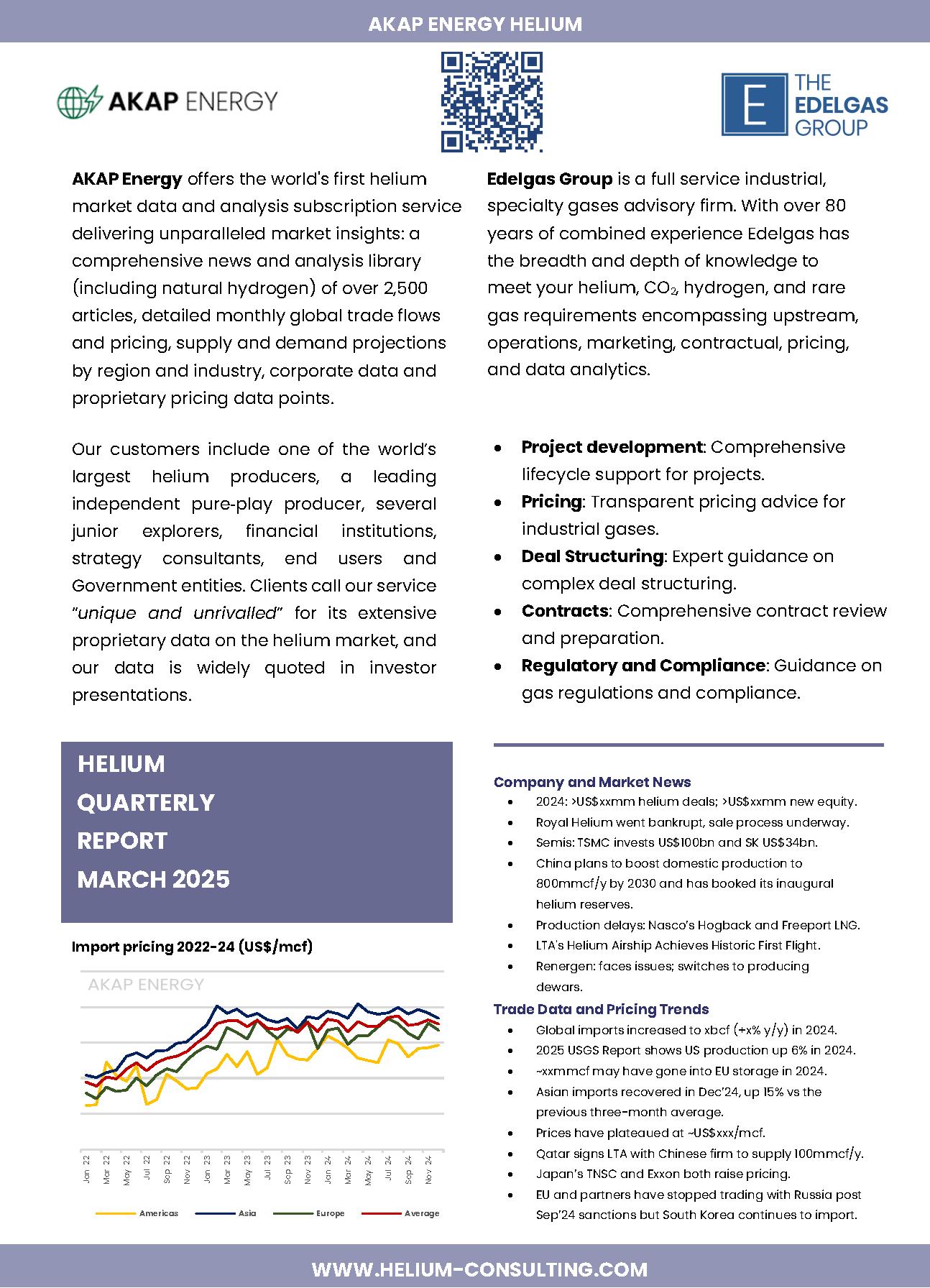

Presenter Brian DeBruine , Colorado Hydrogen Network
Abstract The big impediment to deploying hydrogen today is the need to build a market where none currently exists. By “market” we mean multiple suppliers, users and infrastructure. Suppliers struggle to sell hydrogen because there are no buyers. But buyers have no ready suppliers and both need new infrastructure to move and use hydrogen. The solution is for suppliers, users and infrastructure providers to work together, to agree to implement a project at the same time and the same scale. But to do this, what’s needed is leadership and a plan that all the parties can agree to, and then a willingness to act together at the same time and scale to implement projects. We’ll provide examples of how the Colorado Hydrogen Network is working to fill this role. Why do we need hydrogen? Fossil fuels came to us in the form of molecules, but much of Clean Energy is in the form of electrons. But for some uses only molecules can match the performance and convenience of petroleum, and hydrogen can fill that role. This presentation wi ll provide examples. Where is hydrogen likely to be used? To answer this, we need to take into account three criteria: technical readiness, cost, and performance/convenience. We’ll consider all three and discuss likely uses. Where does hydrogen need to be priced to compete with gasoline, diesel, and natural gas and what are the sources that can meet those prices? We’ll answer that considering transport cost as well.
Biography of Author
Mr. DeBruine is the Director and a co - founder of the non - profit Colorado Hydrogen Network which is a hydrogen advocacy organization that provides stakeholders with a platform for communication, education and collaboration. He is also the host of the HydrogenNowCast podcast. Before becoming an advocate for hydrogen, he enjoyed a 36 - year engineering career with Honeywell Aerospace where he developed new products and programs.
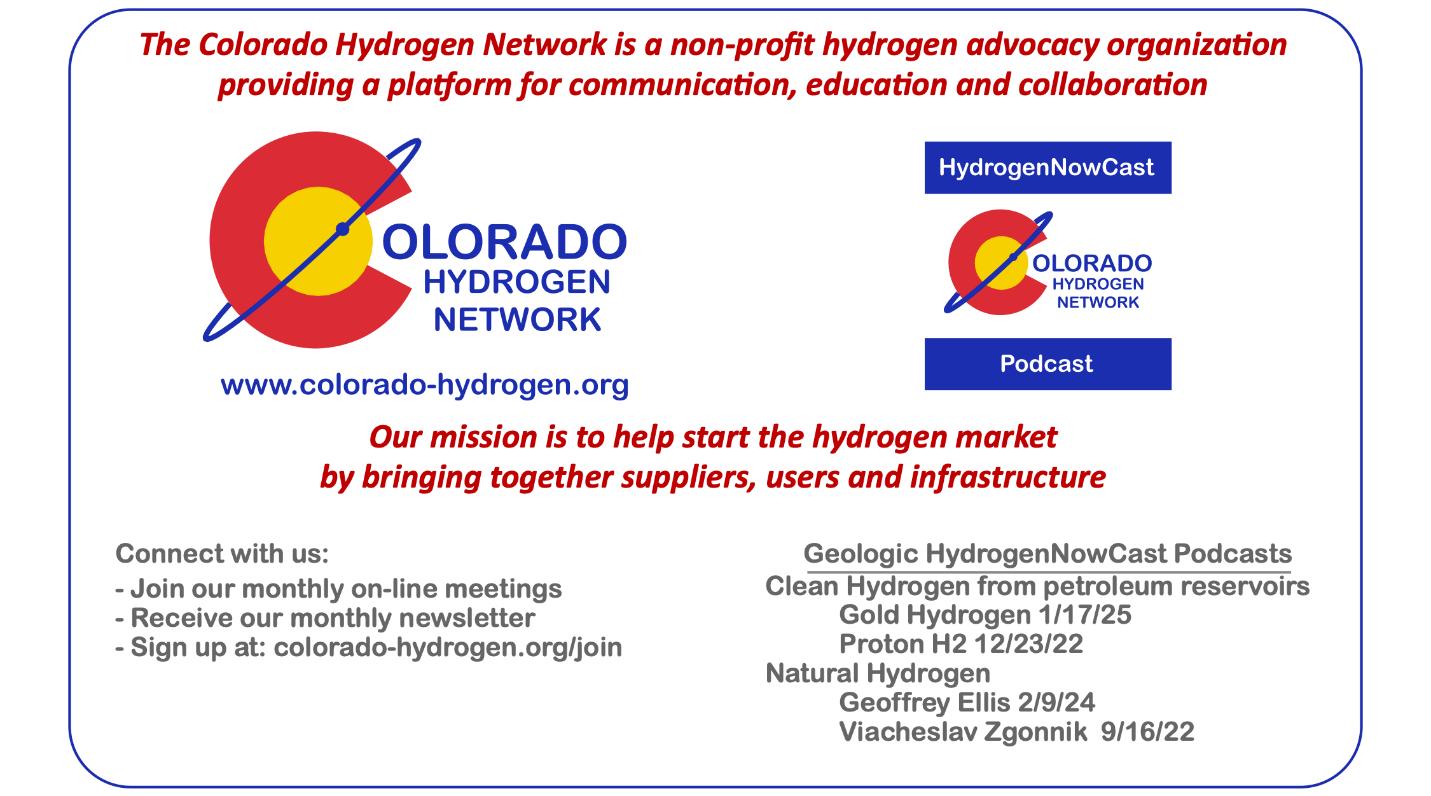

Presenter Andrew Hunt , U.S. Geological Survey
Abstract Typically, in field campaigns, cost drives the ability to complete requested data sets and the analysis of all samples cannot be justified. Field instrumentation for screening potential sample areas represents an economical way to save funding for sampling areas that require the focus of the study. Instrumentation can run the spectrum from handheld monitoring equipment to full scale field laboratories that can be moved to study areas. The U.S. Geological Survey’s Noble Gas Laboratory has developed a mobile mass spectrometer (MMS) to fit a niche that can field screen gas sample sites to evaluate whether a full analysis of noble gas isotopes or other analyses are necessary. The MMS follows design features by Brennwald et al., 2016 which utilized a residual gas analyzer (RGA) attached to a turbo vacuum pumping system with an inlet system consisting of a multi - port valve. The U.S.G.S. system consists of similar RGA, mounted in a field ruggedized frame that can be easily adapted to not only the measurement of free gas samples (e.g., casing gas, soil gas) but also may be adapted for measuring dissolved gas samples via an exchange membrane system. The instrument’s data acquisition and operation (RGA, valve switching and integrated GPS system) are wireless and served through a laptop computer with a Bluetooth connection. The power consumption, while fully running, is approximately 92 watts and can be operated by solid state electrical generator or solar panels in the field. The software operating system runs through inhouse developed software which allows multiple data collection modes (e.g., single collection or long - term monitoring) with integrated/automated standardization for real - time sample interpretation. The advantage of this portable system is that it collects more data for lower cost in the field while having the ability to do field standardization of gas analyses to produce quality data. As a simple field screening tool or a long - term monitor, the MMS represents a flexible, precise tool for real time, economic , data generation for a variety challenging analytical situations. Brennwald, M.S., Schmidt, M., Oser, J. and Kipfer, R., 2016. A Portable and Autonomous Mass Spectrometric System for On - Site Environmental Gas Analysis. Environ. Sci. Technol. 2016, 50, 134 55 - 13463
Biography of Author
Andrew G. Hunt entered service with the U.S. Geological Survey as a Mendenhall Post - Doctoral Fellow in 2001, working in the Crustal Geophysics and Geochemistry Science Center, Denver, Colorado. He is now the branch chief of Economic and Framework Geology with the Geology - Geophysics - Geochemistry Science Center and lead researcher/laboratory manager for the USGS Noble Gas Laboratory. As member of the laboratory, his current research interests include the application of noble gas geochemistry to groundwater da ting, basin - scale fluid - flow studies, and natural gas hydrate research, volcanic hazard monitoring, geothermal system characterization, carbon sequestration, geologically sourced hydrogen and characterization of ore forming mineral systems by fluid inclusi on gas chemistry.

Co - Authors Katherine Chou, National Renewable Energy Laboratory , Jianping Yu, National Renewable Energy Laboratory , Dayo Akindipe, National Renewable Energy Laboratory , Rachelle Ihly, Jacob Sebesta, National Renewable Energy Laboratory , Chris Urban, National Renewable Energy Laboratory , Tao Dong, National Renewable Energy Laboratory , Robert Bell, National Renewable Energy Laboratory , Kaitlin Brunik, National Renewable Energy Laboratory Jennifer King , National Renewable Energy Laboratory
Abstract Geologic hydrogen (geoH2) is an emerging technology with global market interest and distinct potential to change the paradigm of hydrogen production and enable energy transformation. Two major subsurface processes influence the amount of geoH2 that are available for energy extraction: 1) geochemical reactions of H2O and Fe2+ - bearing rocks which can produce hydrogen in the subsurface environment, where 2) various active microbial communities consume hydrogen as an energy source before the hydrogen reaches the surface. The net gain of hydrogen from these two competing processes dictates the production rate of geoH2.
A recent study (Templeton et al., 2024) suggested that for most natural geoH2 systems, five orders of magnitude of production rate enhancement are needed to make geoH2 production economical in the near term. Effective enhancement of the production rate req uires an in - depth understanding of the two geoH2 processes, in order to promote the H2 - generating geochemical processes and suppress the H2 - consuming microbial processes. However, current significant knowledge gaps in these two processes hinders the efforts to formulate strategies to enhance geoH2 production.
The National Renewable Energy Laboratory (NREL) is a U.S. Department of Energy National Laboratory with the core mission of leading research, innovation, and strategic partnership to deliver solutions for energy technologies. NREL’s extensive research portfolio in hydrogen, bioenergy, geothermal, industrial technologies, and energy analysis makes us well positioned to conduct interdisciplinary research and facilitate technology deployment in the geoH2 space. In this presentation, we will discuss ongoing geoH2 research and engagement efforts at NREL, including:
1) geochemical investigation to understand the reaction mechanisms and production rate and potential of different source minerals and rocks,
2) microbiological investigation to understand methanogenesis and acetogenesis in the subsurface geoH2 environment, and identify effective inhibitors for these microbial processes,
3) preliminary analysis for geoH2 production in the State of Minnesota, where abundant Fe - rich rocks for stimulated geoH2 production and ample opportunity to utilize geoH2 in promoting iron and steel industries are currently available.
Biography of Author
Xiaofei Pu is a thermal energy researcher at the National Renewable Energy Laboratory (NREL) based in Golden Colorado. Trained as an experimental petrologist and high - temperature geochemist, she has spent the last five years working in two different U.S. Department of Energy National Laboratories doing research and development on a wide range of topics related to subsurface energy production and storage. As the principal investigator of a research project focused on stimulation strategy for geologic hydroge n production, she is working

with a multidisciplinary team of microbiologists, chemical engineers, petroleum engineers, and renewable energy analysts who are enthusiastic about promoting the advancement of geologic hydrogen production technology, with some current focus on the state of Minnesota with strong connections to an NREL initiative for industrial transformation in the state. This presentation aims to provide some information on the current and upcoming work on geologic hydrogen at NREL.

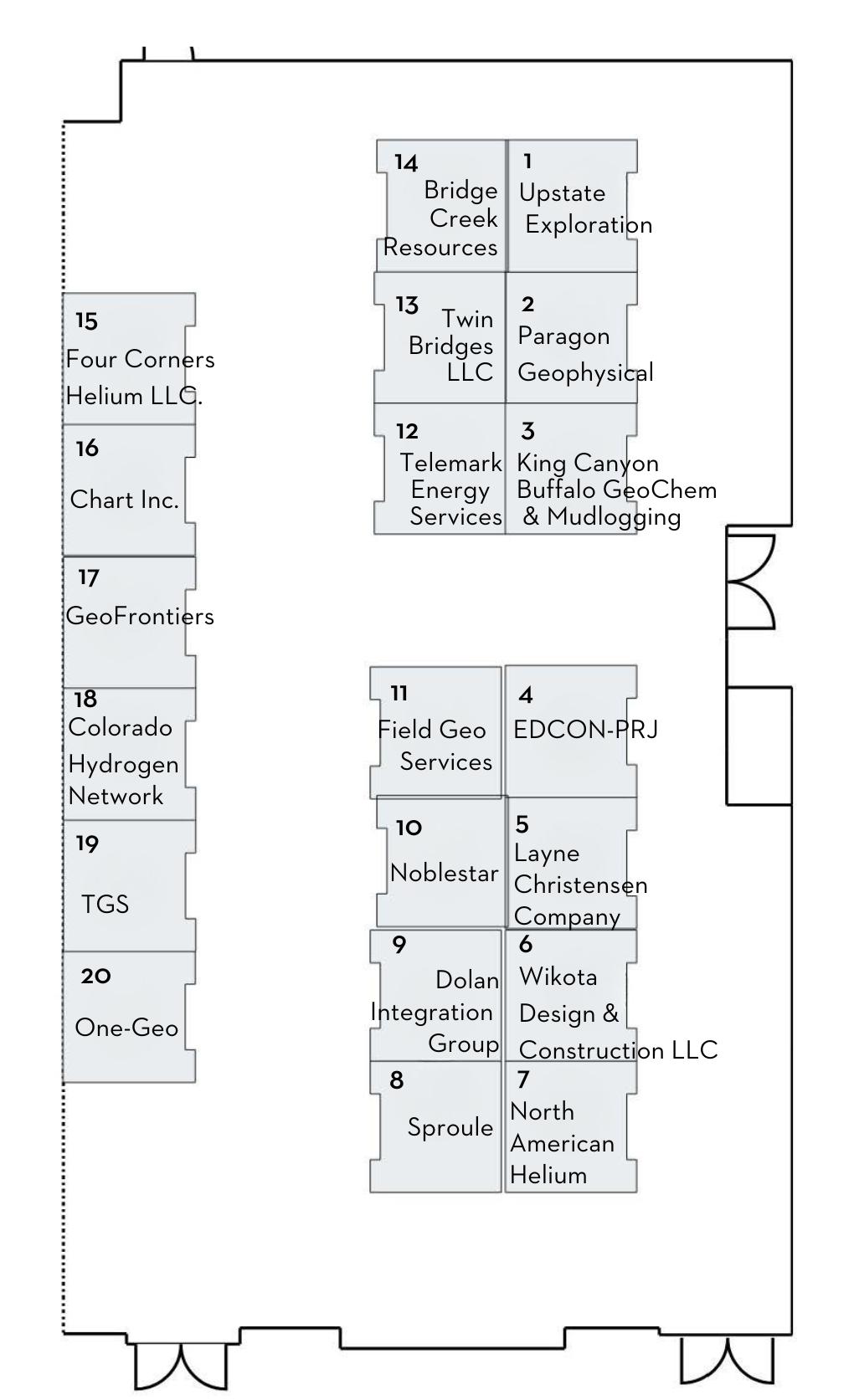
Chart Inc. – 16
Colorado Hydrogen Network – 18
Dolan Integration Group – 9
EDCON - PRJ – 4
Field Geo Services – 11
Geo Frontiers – 17
King Canyon Buffalo GeoChem & Mudlogging – 3
Layne Christensen Company – 5
Noblestar – 10 North American Helium – 7
One - Geo – 20 Paragon GeoPhysical – 2
Sproule – 8
Telemark – 12
TGS – 19
Prospects
Bridgecreek Resources - 14
Four Corners Helium, LLC - 15
Olsen Energy, LLC – 3
Twin Bridges LLC13 Upstate –Exploration – 1
Wikota Design and Construction, LLC6

J eff A ldrich S proule
J onathan Allard HyReveal
Rod Andersen Helium Enterprises, LLC
C olter Anderson Wavetech Helium
N athan Anderson Layne Christensen Company
T ed Anderson Minnesota Department of Natural Resources
M ark Andreason Navajo Nation Oil and Gas Company
L uke Arnsberger Dolan Integration Group, LLC
D alton Balentine GeoFrontiers Corporation
D ave Balleau Ute Mountain Ute Tribe
C hris Ballentine University of Oxford
D ave Banko Banko Petroleum Management, Inc.
K irk Barrell Barrell Energy inc
M atthew Bauer Agapito
B enjamin Baugh Entrada Consulting Group
M ark Beeson 21st Century Geoscience Ltd
D oug Bell American Gas Products Inc.
B ryan Benally Navajo Nation Minerals
S ouvik Bhattacharjee Kansas Geological Survey
M ike Bingle - Davis Wesco Operating
D ale Bird Bird Geophysical
M ichele Bishop Bishop Research LLC
L orna Blaisse Helium One Global Ltd
D an Blankenau Great Plains Energy, inc.
M ichael Bogutzki Wikota
Eri k Borchardt SLB
G rahme Borchardt Topographic Co.
S cott Bowles The Cobalt Group, LLC
B rendan Bream Kansas Geological Survey
S ean Brennan U.S. Geological Survey
Ron Broadhead New Mexico Bureau of Geol o gy and Mineral Resources
R yan Brock RGGS Minerals
G wen Brodsky Aota Technical, LLC
Ri chard Brook Garrison Ventures
B enjamin Brooks One - Geo
Eri c Bruesewitz TAQ Energy Consulting
J ohn Buggenhagen Koloma
B rad Cage Pulsar Helium Inc.
N athan Campbell EDCON - PRJ Inc
A ndrew Carroll Mosman Helium LLC
Ki rby Carroll Aspect Holdings. LLC.
D avid Casey D3 Energy Limited
Bi ll Cathey Earthfield Technology LLC
R owena Cheromiah Navajo Nation - Minerals Department

Katherine Chou National Renewable Energy Laboratory
B ob Clark Skyline Assayers & Laboratories
D ave Clupper Clupper company llc
Va lentine Combaudon University of Colorado, Boulder
M ichael Cook ExxonMobil
J ames Cooper Layne Christensen Company
M ark Davidson Telemark Energy Services
J ulie Daws Mosman Helium LLC
Br ian DeBruine Colorado Hydrogen Network
Br ian Dellet Layne Christensen Company
Elli ce Devine ECMC
Pa ul Differding Division of Energy and Mineral Development
A nthony Dolan Dolan Integration Group, LLC
B rendan Doner Colorado Hydrogen Network
C laudia Duenas Koloma
S tephen Dunbar Blanca Peak Resources
Ri chard Dunn Helium Developers Association of Canada (HeDAC)
M ason Dykstra MinersAI
D avid Eby Eby Petrography & Consulting, Inc
Hu nter Eden Field Geo Services, Inc.
J ames Ehrets Upstate Exploration, LLC
A nders Elgerd Eldora Exploration
Eri k Elgerd EE Geotech LLC
To m Elliott Hotspur Helium Limited
Ge offrey Ellis U.S. Geological Survey
Do n Elsenheimer Minnesota Department of Natural Resources
N eil Evans First Element Exploration
K en Farley Caltech
S tuart Farris Hestia Energy
K ip Ferguson US Energy Corp.
S c ott Field Field Geo Services, Inc.
M atthew Fox
J ames Franks Hunt Energy
J oao Gallotti
U.S. Geological Survey
To m Gannon CO2 Coalition
S arah Gelman
U.S. Geological Survey
M ark Germinario
Integrated Geologic Solutions LLC
S hawna Gilbertson Terra Guidance
Rob ert Glaser Elendil Resources
S teven Golko Sproule
Br ad Gooch Addis Energy
Rob ert Goodin U.S. Geological Survey
M athew Goolsby Vecta Oil & Gas, Ltd
W ill Gray New Era Helium Inc.
B obby Greene Go Wireline
St ephen Greenlee Fox Canyon Ranch, LLC
M ichael Grimwade Colorado Hydrogen Network

Wilson Groen
Br yce Grote
Timberline Oil & Gas Corp
K en Grubbs Engelmann Resources LLC
J ason Gumble
Kansas Geological Survey
M atthew Haas JKLM Energy
D aniel Halford California Institute of Technology
S tephen Harpham Orogeny Resources LLC
B eno î t Hauville 45 - 8 ENERGY
C urtis Haverkamp ECMC
Br ad Hayes Petrel Robertson Consulting Ltd.
J ane Hearon
U.S. Geological Survey
J onathan Heer Arjae Design Solutions Ltd
R yan Herz - Thyhsen HT Geoscience Consulting
M ichael Hobbs
EDCON - PRJ Inc
C indy Hoffmann New Mexico Tech
A llegra Hosford Scheirer Geomodeling Solutions
A ndy Hunt U.S. Geological Survey
S ander Hunter Vema Hydrogen
K atie Hynes ST Oil Utah LLC
Ra chelle Ihly
National Renewable Energy Laboratory
G raham Jacobs Helium One Global Ltd
T homas Jeute Antero Resources
J aime Jimenez Paragon Geophysical Services, Inc.
J ames Jmieff
Navajo Transitional Energy Company
R M Joeckel University Of NebraskaLincoln CSD
D avid Johnson CITO Energy
Br ent Jonah Thor Resources LLC
J eremy Jordan Jordan Development Solutions
A lexander Judge IACX Energy LLC
A lina Kalfsbeek Own Resources
R u ta Karolyte Snowfox Discovery
M asaaki Kawai NGK Automotive Ceramics USA
Bi ll Kerrigan Plateau Helium Corporation
D arren Kirkwood Kirkwood Companies
To m Kirkwood Kirkwood Companies
S tan Kleinsteiber
J ames Kochick Kowest Energy LLC
Ph il Kornbluth Kornbluth Helium Consulting
M ike Korte Korte & Company
J esse Korus University of NebraskaLincoln
Sa bina Kraushaar Four Corners Helium LLC
P eter Kubik DLX
J ohn Ladd Phantom Bridge Resources
R yan Lambrecht Division of Energy and Mineral Development
J oe Large Mojo Geological Consulting LLC
Ma tt Larson True Oil LLC.
K aren Lechtenberg ARI

Ryan Leik Altitude Energy Partners
J oerg Leinberger - Balster Evonik
M ike Liljegren MN DNR - Lands and Minerals
D avid List Zephyr Energy
N icholas Little Noblestar Technologies LLC
D ion Lobreau Mazama Energy, LLC
A lejandro Lopez University of Texas
D avid Macareno 45 - 8 ENERGY
D uncan MacKenzie Global Helium Corp.
M ichael Madison Green Mountain Exploration LLC
S tefano Marani Renergen
B enjamin Matlaga Chart Inc.
A aron Mattson Mafic Consulting Group
W illiam McCabe Navajo Nation Oil and Gas Company
S cott McCleery McCleery International Shale, LLC
H oward Mclaughlin Mosman Helium LLC
C andice McMillin TGS
A lex Meek Plateau Helium
M ike Merchant Chart Inc.
K en Moen Canadian Helium Inc
Ed win Moritz WSP
C hristopher Mullen Bandit Exploration, LLC
A tul Nautiyal TetraTech
C hris Nerud King Canyon Buffalo Geochem & Mudlogging LLC
J acinda Nettik Brown NTEC
Br ad Neuls North American Helium
K im Nordberg Paragon Geophysical Services, Inc.
C hristopher O'Connor Elendil Resources
Ge rald O'Leary APTIM
Eri c Olsen Olsen Energy LLC
J en nifer Olsen Olsen Energy LLC
KC Oren Tracerco
T odd Osmera Jicarilla Apache Nation, Oil and Gas Administration
K irsten O'Sullivan Air Liquide
T im Paradise Noblestar Technologies LLC
Ron ald Parker Borehole Image Specialists
T im Parker AGP
W illiam Pearson Pearson Technologies Inc
Br ian Peters IACX Energy LLC
K enneth Petrie Weyerhaeueser
A manda Petzold ECMC
K evin Piecznski TGS
M ike Poirier Apogee Exploration
T im Pommett ExxonMobil
Xi aofei Pu National Renewable Energy Laboratory
A ldis Ramadhan
J ohn Ready Advanced Resourced International

Trent Reese
Longleaf Energy Group, Inc.
S hannon Rentz U.S. Department of Interior
C alvin Reppe Windom Peak
Ga ry Rice GeoFrontiers Corporation
S avannah Rice Fortescue
M ike Rigby ECMC
N icholas Robichaud Echelon Expl & Prod Co., Inc.
S tephen Robichaud Echelon Expl & Prod Co., Inc.
N athan Rogers
Colorado Geological Survey
S cott Roller The Cobalt Group, LLC
N icole Ronsky Sproule
A ryn Rowe Arowe, Inc.
M ark Russell Telemark Energy Services
Ge rard Ryan D3 Energy Limited
W ayne Rydman North American Helium
T im Rynott Four Corners Helium LLC
S aad Saleh The University of Texas at Austin
N igel Sandberg Canadian Helium Inc.
M iri Schmitz Evonik
N icholas Schofield Pulsar Helium Inc.
Ro Shukla One - Geo
Ol ivier Sissmann IFP energies nouvelles
A li Sloan Core Geologic
C hristopher Smith Advanced Hydrocarbon Stratigraphy
S am Smith
Glenn Felderhoff
T rent Spry Blue Star Helium
R achel Stanley
Exxon Mobil
Kassandra Steele Clear Creek Solutions
D rew Stephon Morning Gun Exploration LLC
Rob Sterling Confluence Resources, LP
Rob ert Stewart University of Houston
D a vid Stich True Oil LLC
C atie Stitt
Colorado State Land Board
N icholas Stork Conifer Infrastructure Partners
N ick Stringari Noblestar Technologies LLC
F inlay Stuart SUERC
Rob in Swank Conundrum Geological Services, LLC
S hohei Taguchi JAPEX
M asashi Takayama JAPEX
M asaru Takehara Marubeni America Corporation
S teven Tedesco Running Foxes Energy Corp.
Pa ul Terrien Air Liquide Advanced Technology US
D erek Timmermann ECMC
C hristopher Toth First Element Exploration
Alle n Toweill Chevron
J onathan Treffkorn Caltech
D ylan Tullius Antero Resources

Andrew Turner U.S. Geological Survey
Bi ll Untiedt Vecta Oil & Gas, Ltd
M ichael Vanden Berg Utah Geological Survey
S teven Veal Bridgecreek Resources
A dam Vincent IACX Energy LLC
Em ily Waldron ECMC
D avid Wallace Twin Bridges Resources, LLC
T homas Wallace Twin Bridges Resources, LLC
J ames Weaver Blanca Peak Resources
J osh Whitcombe HyTerra Ltd
Mark White
Kansas Geological Survey
M ike Wichterich First Element Exploration
R ic Wiesemann CO2 Coalition
D onna Willette Illinois State Geological Survey
H enry Williams Thor Resources LLC
R achel Williams CSM
Brandi Winkel ExxonMobil
J ianping Yu National Renewable Energy Laboratory
J ohn Zetzman D3 Energy Limited
V iacheslav Zgonnik HyReveal
T ongwei Zhang Bureau of Economic Geology, UT Austin


J effrey Aldrich is a Senior Geoscientist with Sproule International Company (formally MHA Petroleum Consultants). He has over 40 years of global oil and gas experience working from frontier exploration through appraisal to large development projects. His expertise is in unconventional reservoirs, prospect evaluation, reserve determinations, helium reservoirs and multi - discipline and multi - culture team dynamics. Jeff is the primary Petroskills instructor for “Evaluating and Developing Shale Reservoirs (SRE )” , “Prospect and Play Analysis (PPA)” and Unconventional Reserve and Resource Evaluations (URRE). Prior to joining MHA he held various management and technical positions with Dart Energy, a Australian global unconventional gas company, Greenpark Energy, a UK CBM company, PetroSA, the South African national oil company, and American companies, Forest Oil, Maxus Energy and Pennzoil Oil and Gas Company. He has a B.S. Degree in Geology from Vanderbilt University and a M.S. Degree in Geology from Texas A&M Un iversity. He is an active member in the AAPG having served as the Vice - President, Sections, President of the DEG and is currently the Chairman of the Board of Datapages, LLC. plus, active on several committees. He is also a member of SPE, RMAG, DWLS, DIPS and is both a Certified Petroleum Geologist (#3791) and a Licensed Professional Geologist in Texas, Louisiana and Alberta. He is author or co - author of over 30 papers and/or technical presentations.

Michele received a B.A. degree in geology from the University of Colorado and a M.S. degree from Duke University where she was part of the Project PROBE research into the structural geometry of rift formation. She contributed work on sedimentary response t o rift geometry to the project. She worked for Marathon Oil Company in the Denver Research Center and then in the Gulf of Mexico Exploration division in Houston. Later as a consultant for the USGS she contributed one Arctic and eight Asian and Australian petroleum system style basin studies and resource analyses to the World Energy Project. While with Gustavson Associates she supported clients in oil, natural gas, and coal - bed methane projects worldwide with due diligence, reserve, and resource reporting and mineral appraisals. Beginning in 2013 she worked with several North American helium companies adapting the petroleum system approach to helium and applying it to prospect identification and evaluation, exploration, reserve and resource reporting. Now as a consultant, Michele continues her interest in helium exploration.

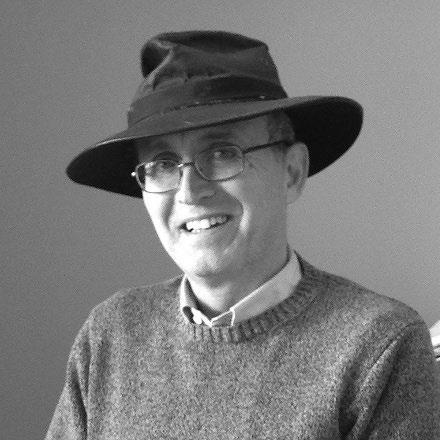
Ron Broadhead received his B.S. in Geology from New Mexico Tech and his M.S. in Geology from the University of Cincinnati where he studied Devonian shales under the late Paul Potter. He worked for Cities Service Oil Company in Tulsa and Oklahoma City and has been with the New Mexico Bureau of Geology and Mineral Resources (a Division of New Mexico Tech) since 1981. He retired from New Mexico Tech in 2020 and was granted emeritus status by the university. At the Bureau, major research projects have included the New Mexico petroleum source rock project, subsurface and petroleum geology of the Permian, San Juan, Tucumcari, Raton, Las Vegas and Estancia Basins as well as helium - rich and CO 2 - rich natural gases of New Mexico. He also supervised the Bureau’s core and subsurface information libraries. He taught subsurface and petroleum geology at New Mexico Tech beginning in 1982 and continues to teach part - time in retirement. His numerous society activities include serving as editor of Search and Discovery, the online journal of AAPG, from 2011 through 2018.


Sean Brennan is co - project lead for the Carbon and Energy Storage, Emissions, and Economics Project at the U.S. Geological Survey. His main areas of expertise include sedimentology, stratigraphy, low - temperature geochemistry, and subsurface fluid systematics. His research has focused on assessing non - energy gases in the subsurface, creating assessment methodologies and completing assessments of subsurface fluid resources, and working to understand the creation, migration, and entrapment of various naturally occurring fluids.
Jason is the principal of carbon management for US markets at Sproule and has experience in traditional oil and gas exploration and production, CO2 sequestration, hydrogen storage, and geothermal screening. He has over 23 years of experience in exploration and production settings, and in recent years has performed numerous CCS regional and site screening projects along the US Gulf Coast, Midwest, US and Canadian Rockies, and the East Coast. Jason has experience in the United States, Canada, Brazil, Kazakhstan, Argentin a, Guyana, Eastern Mediterranean, & the North Sea.


Geoffrey Ellis is a research geologist and the project chief of the Potential for Geologic Hydrogen Resources project within the Energy Resources Program (ERP) of the U.S. Geological Survey. He is also an affiliated faculty member in the Department of Geology and Geological Engineering at the Colorado School of Mines. He holds a bachelor’s degree in geological sciences from Cornell University, a master’s degree in geochemistry from the Colorado School of Mines, and a doctorate in marine geology and geophysics from the University of Miami. Prior to joining the ERP, he worked as a staff scientist in the Division of Chemistry and Chemical Engineering at the California Institute of Technology, as a research chemist in the Water Resources Division of the U.S. Geological Survey, and as a consultant in environmental and resource exploration geochemistry.

Mark Germinario received his BS & MS in Geological Sciences from San Diego State University finishing in 1982. His 42 - year career in exploration and production includes positions held at Union Pacific Resources, Stroud Energy, EOG Resources and Beacon E&P . He has worked many conventional and unconventional oil and gas plays across the Rockies, Texas, and Oklahoma. Mark has developed a broad background in conventional and unconventional reservoir characterization, geo - mechanical stratigraphy, field deve lopment planning, basin and prospect evaluation, and best practices analysis.
In addition, he has participated in the geotechnical management of two successful small privately funded E&P companies.
While at Union Pacific Resources, Mark contributed to the building of the Ladder Creek Helium Plant in Cheyenne Wells, Colorado by discovering and documenting the helium resources of the Morrow Sandstone, in Eastern Colorado. From early 2020 through late 2023, he was business development director at the Ladder Creek Helium Plant owned by Tumbleweed Midstream. Mark is the owner of Integrated Geologic Solutions, LLC, providing geologic and business development consulting services to the helium and hydrocarbons sectors. He is currently focused on marketing helium investment opportunities. This includes the acquiring and development of helium and natural gas resources in central Kansas and the eastern Mid Continent.


Dr. Steven A. Tedesco is Owner of Running Foxes Petroleum Inc.; Manager of MRE Wind and Solar; and Manager of Starfox Helium Inc. and has been in the resource industry for over 40 years. Dr. Tedesco has a MS from Southern Illinois University and a PhD from Colorado School of Mines. He has written numerous articles on coal, coal - bed methane, surface geochemistry, Pennsylvanian stratigraphy, numerous field studies, and use of aeromagnetics in petroleum and resource exploration and gas operation. Dr. Tedesco recently authored the book: Geology and Production of Helium and Associated Gases published this spring by Elsevier and another book entitled Surface Geochemistry in Petroleum Exploration published by Chapman and Hall. Dr. Tedesco is on the Foundation Board for Southern Illinois University. Dr. Tedesco operates over 600 CBM, oil (both conventional and waterflood) and gas wells in Utah, Missouri, Kansas, and Wyoming and has solar and wind assets in Arizona, Utah, Colorado, and New Mexico. Dr. Tedesco is a member of SPE, AAPG, RMAG, Emu Association, and National Buffalo Association.